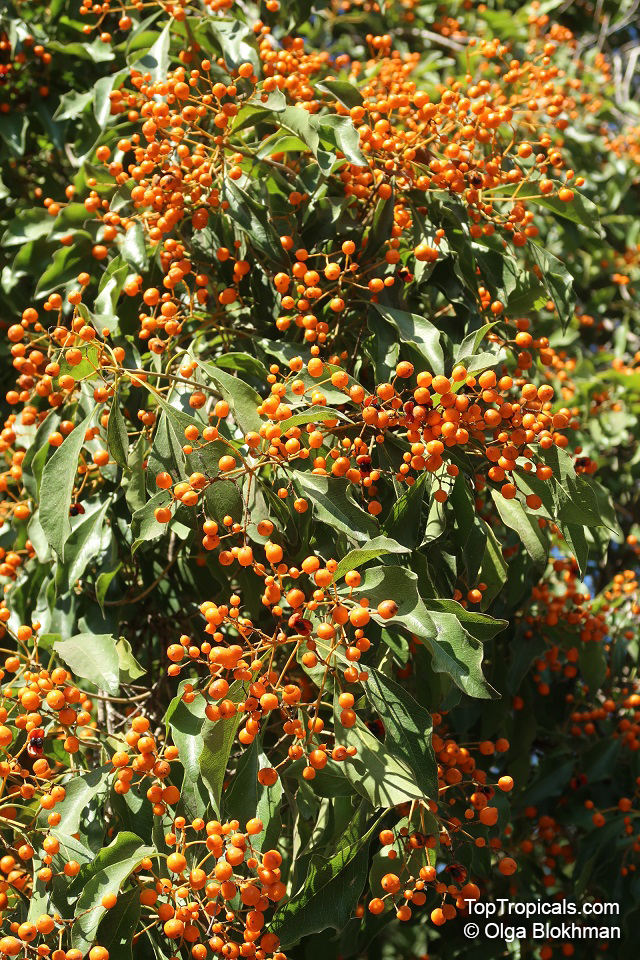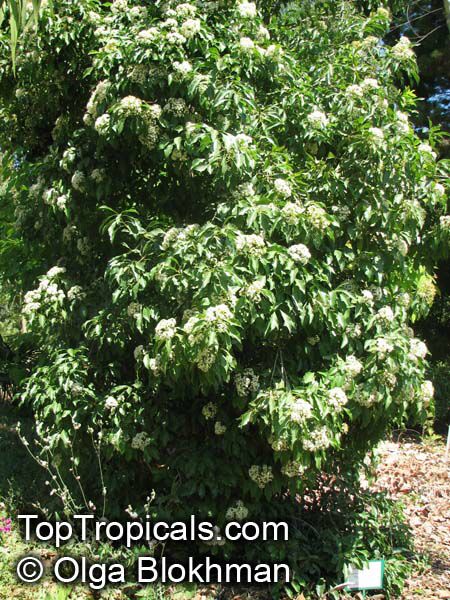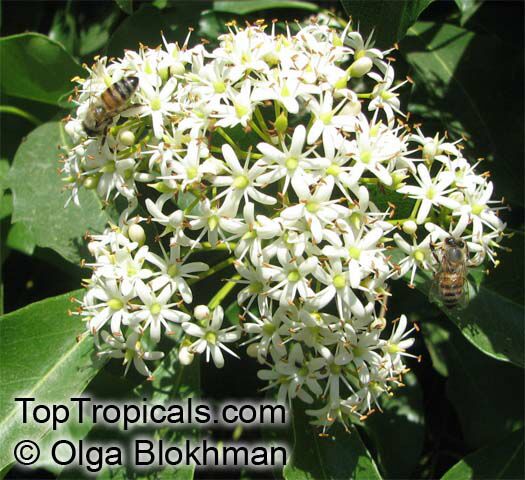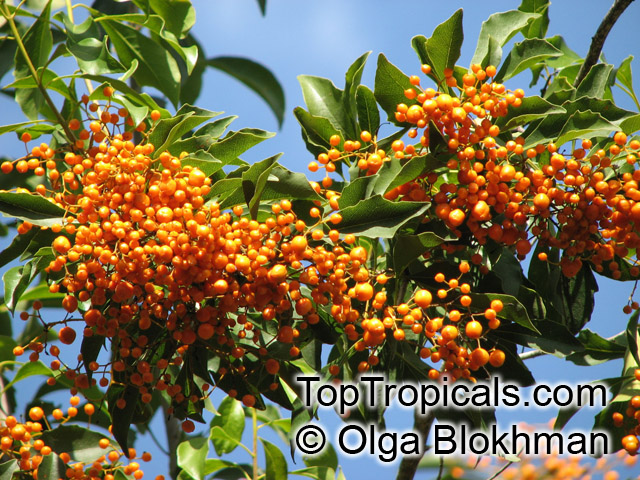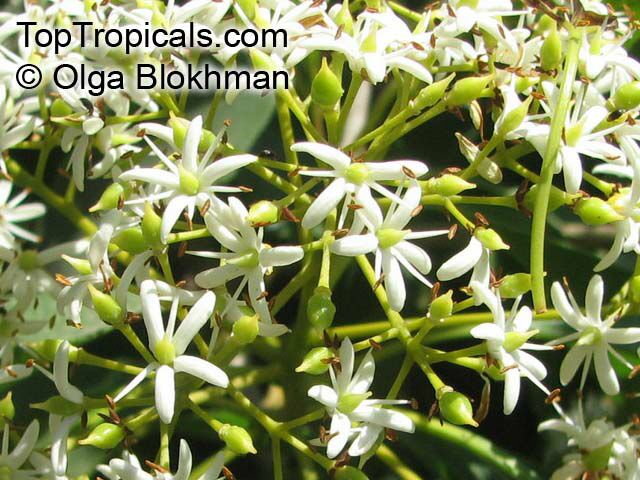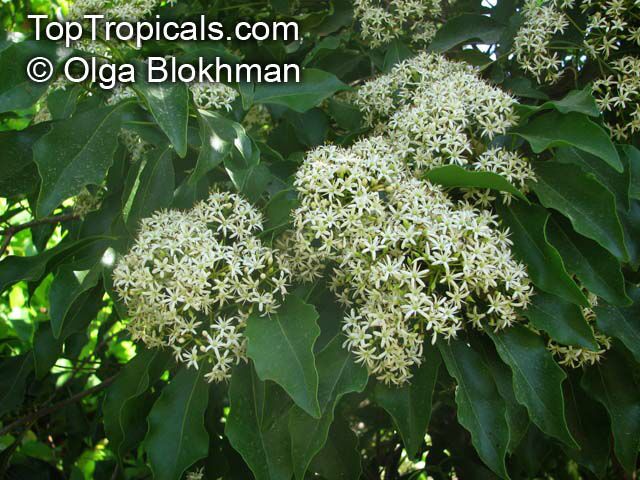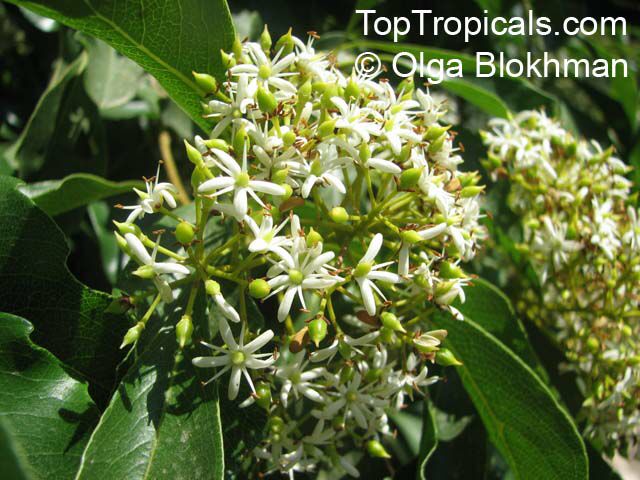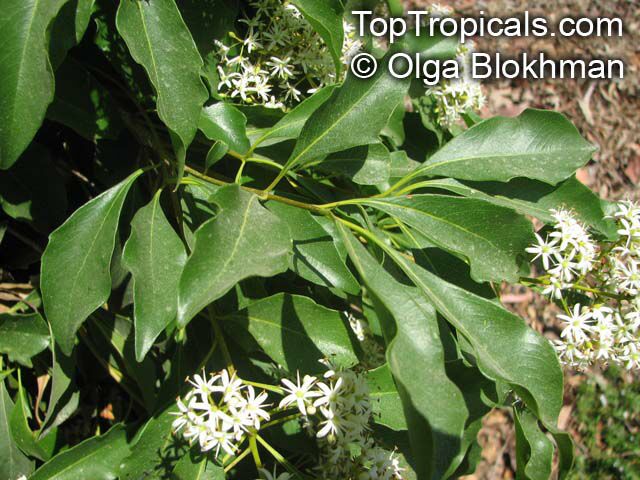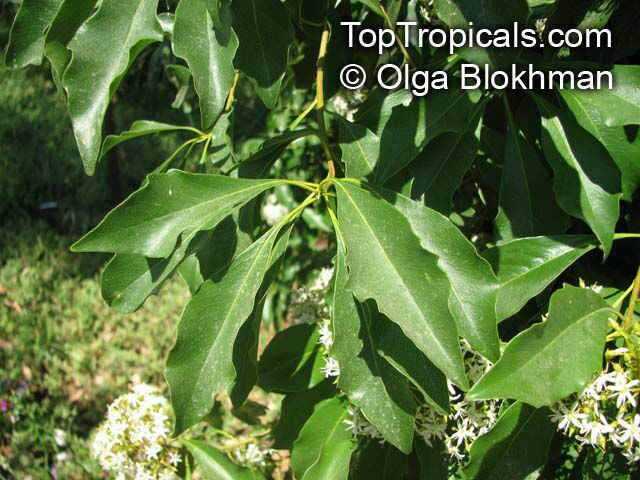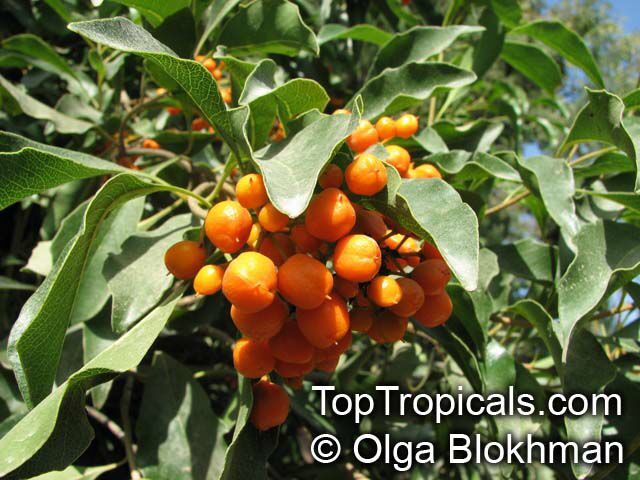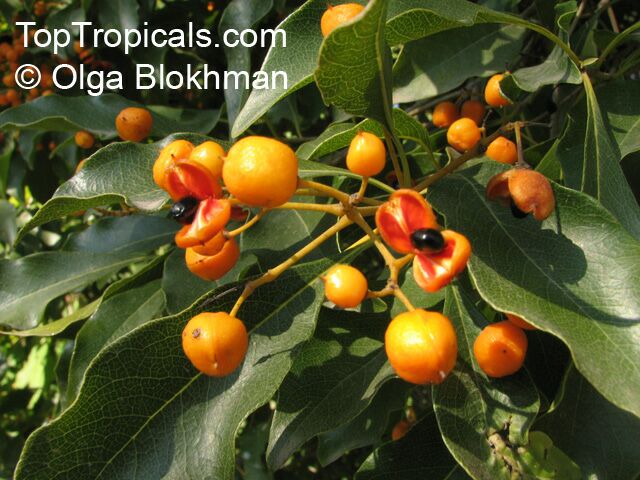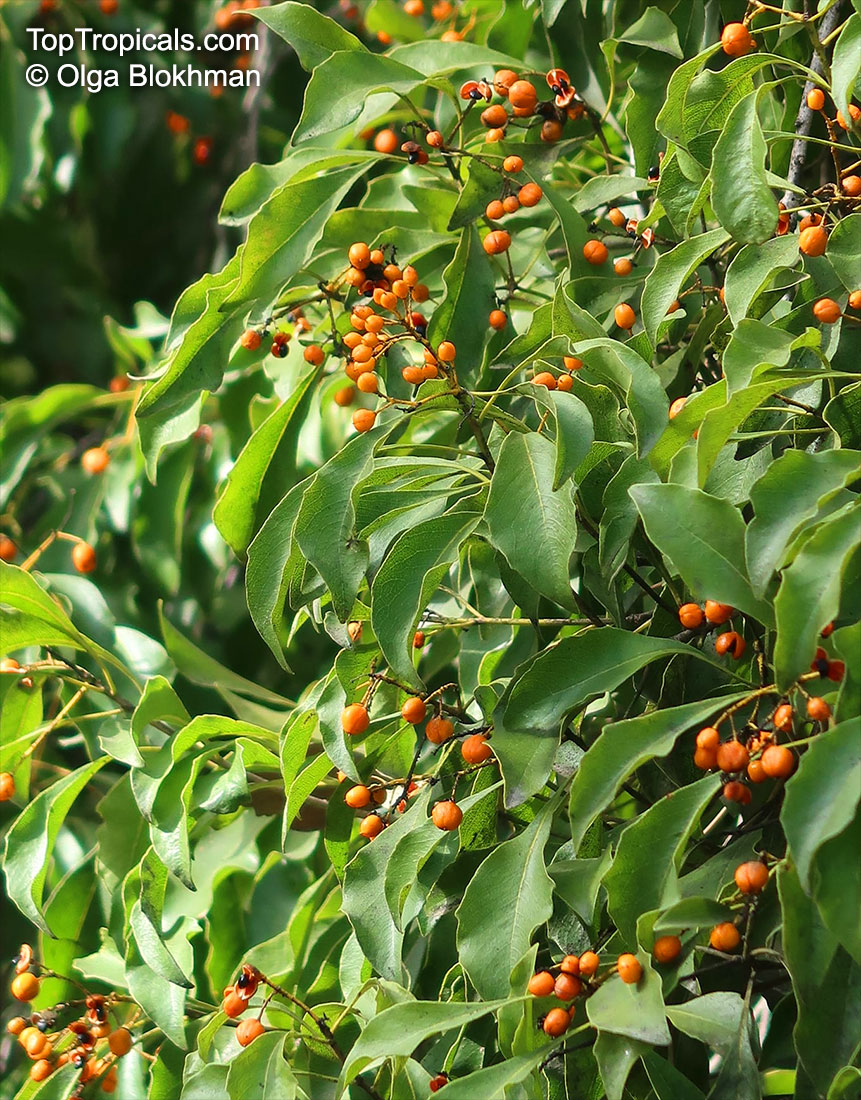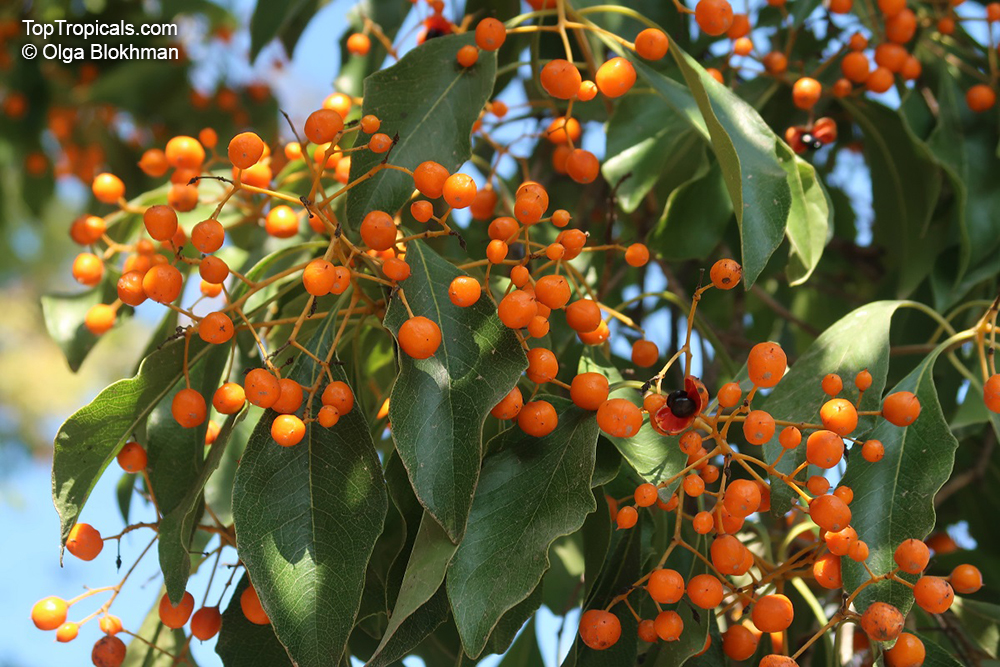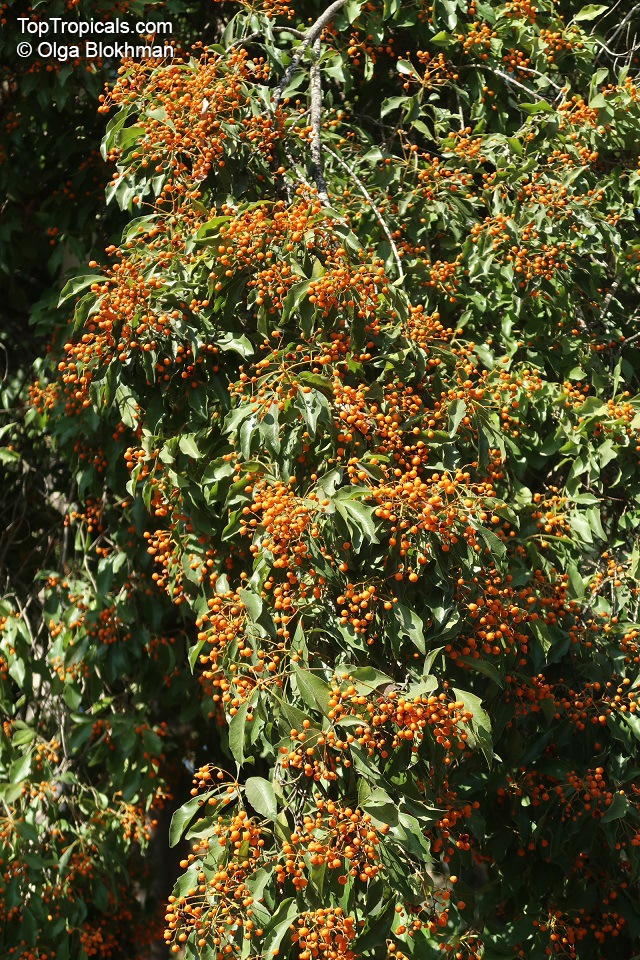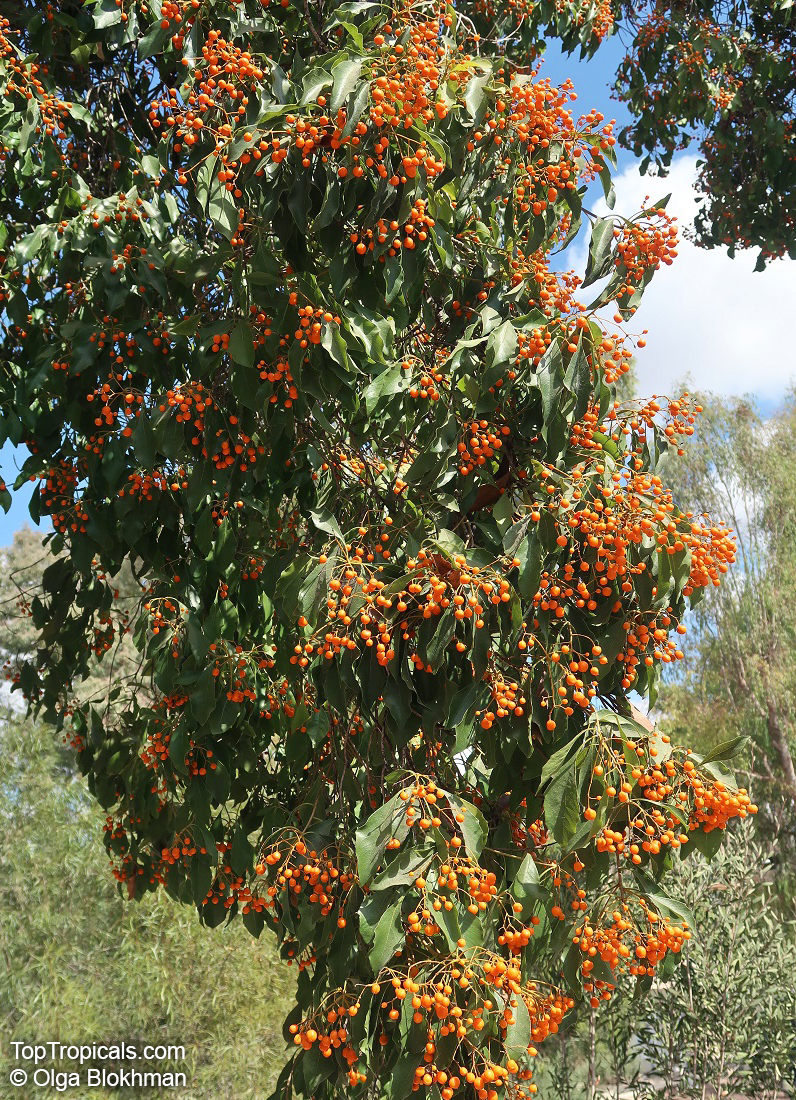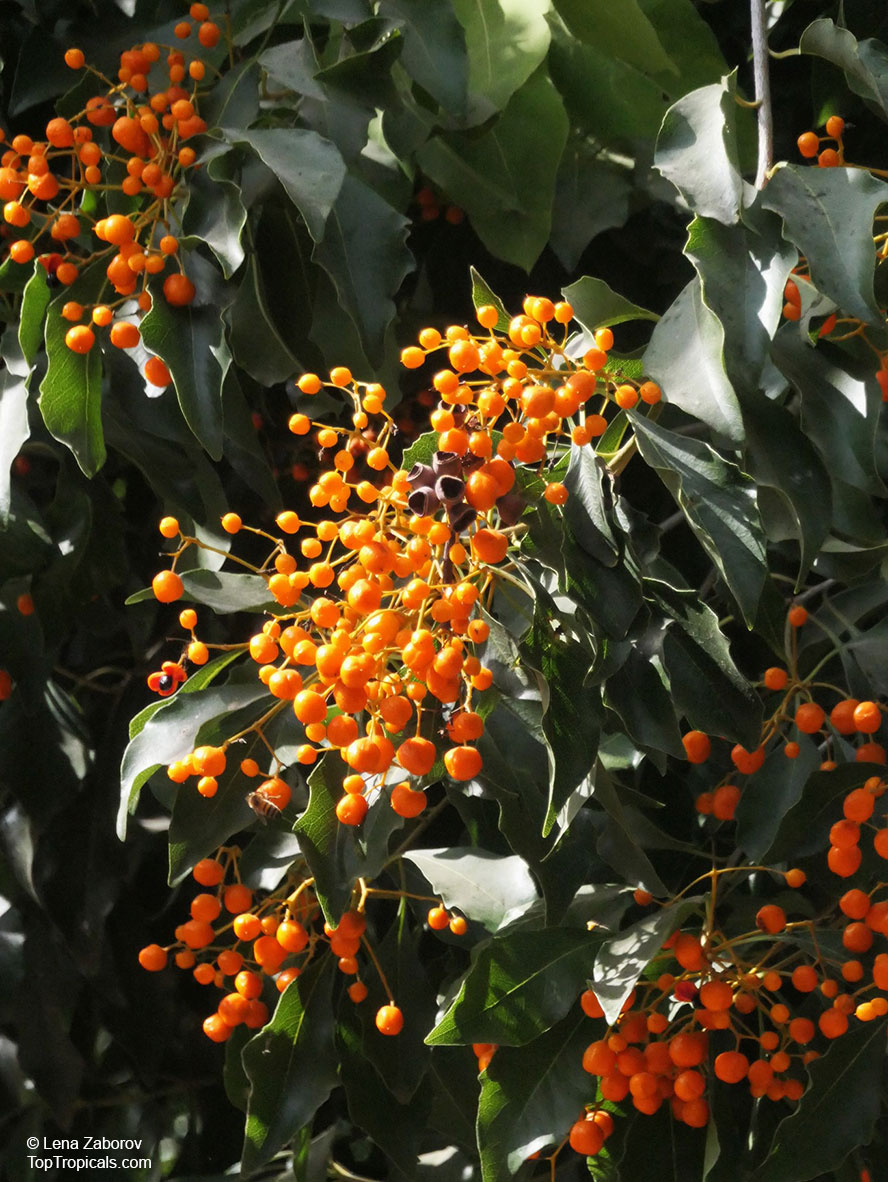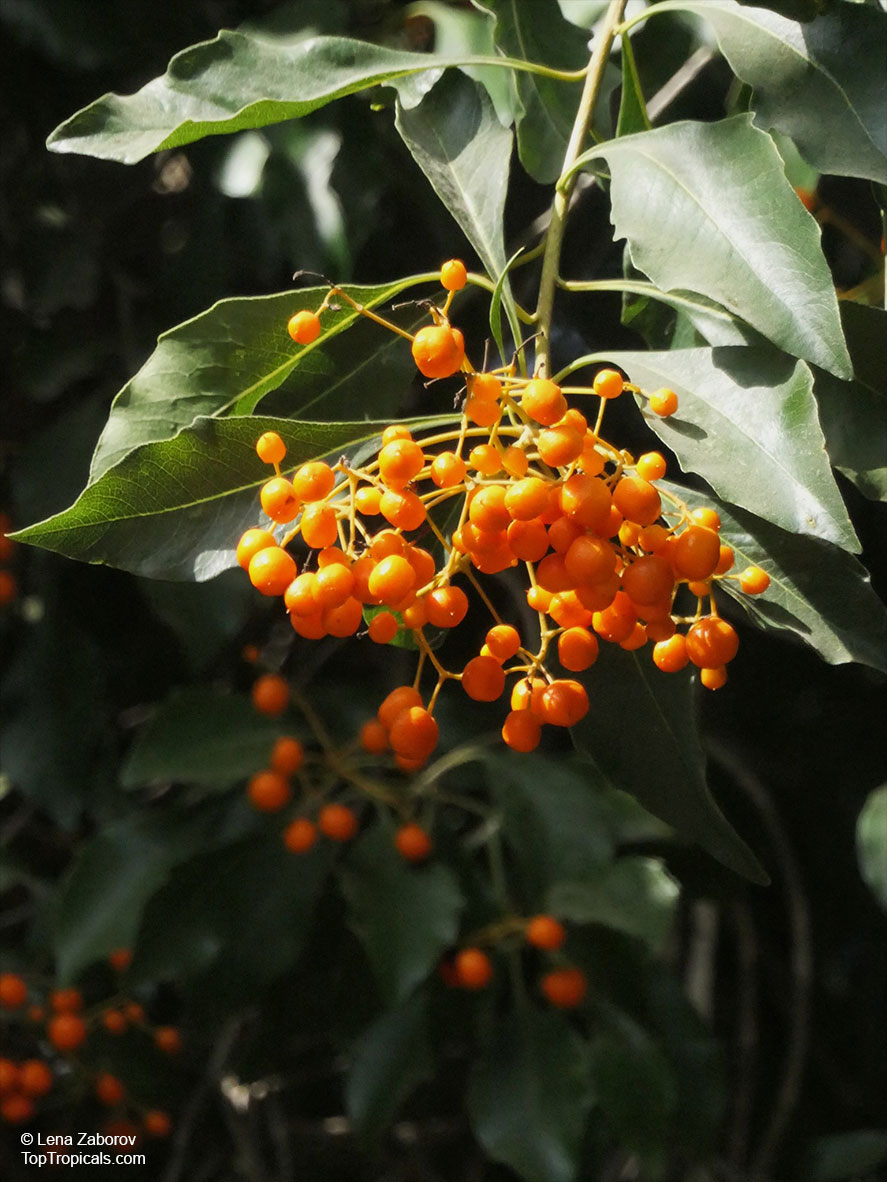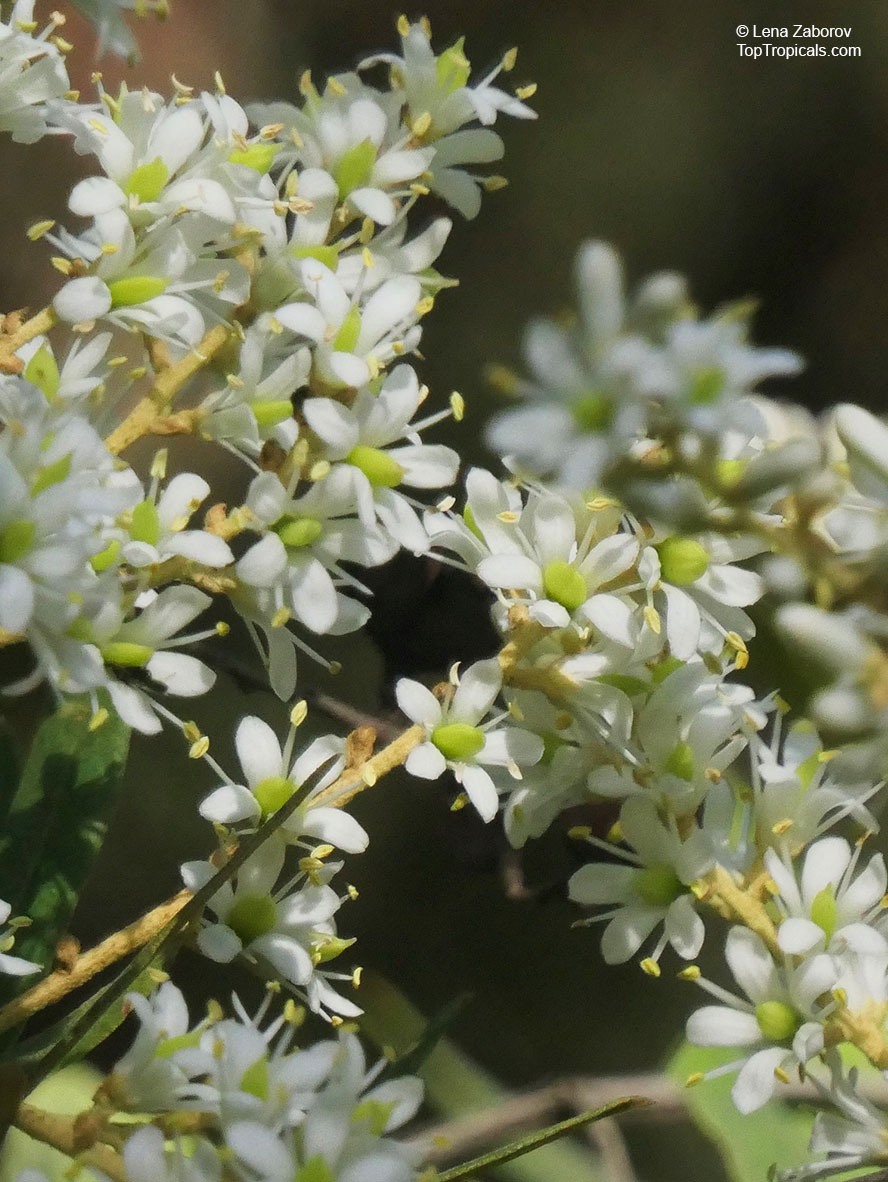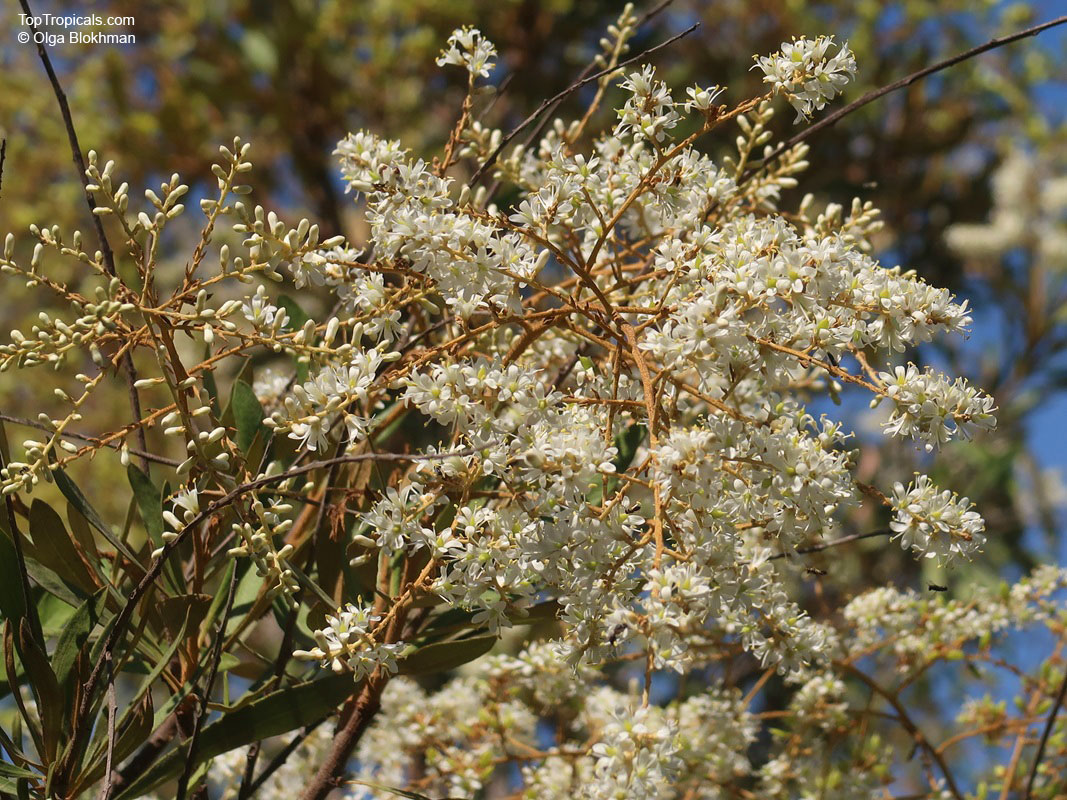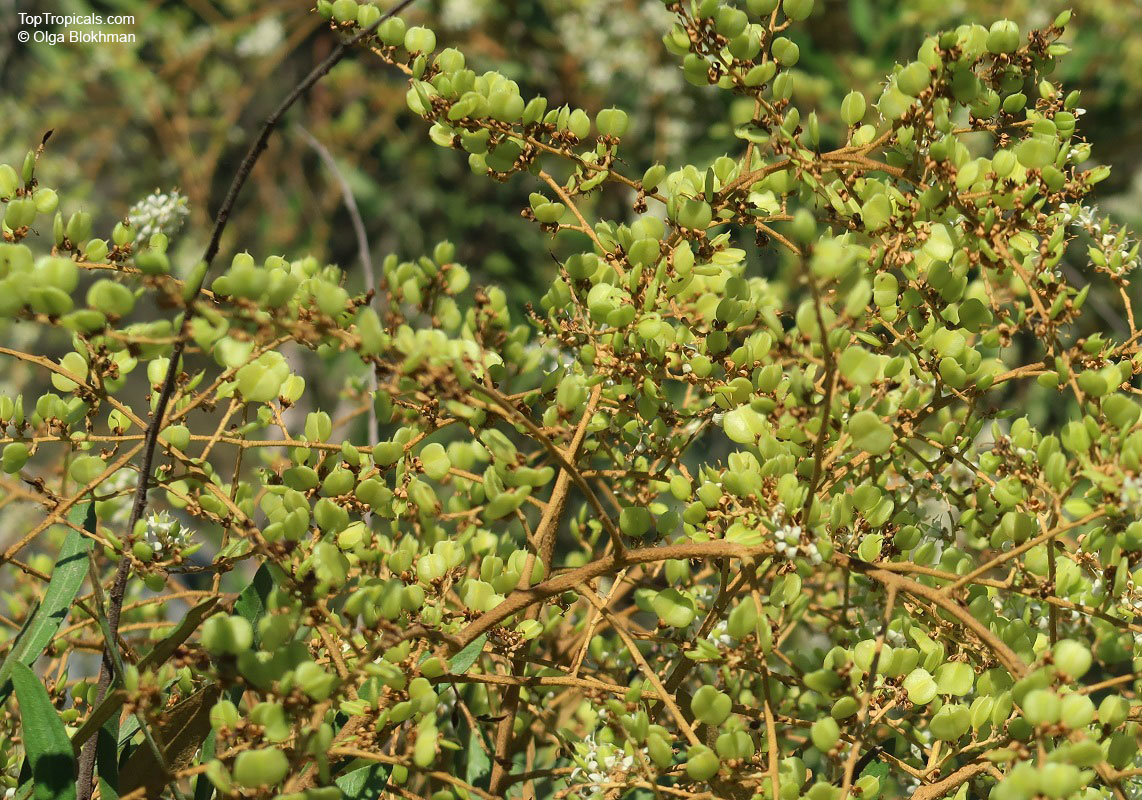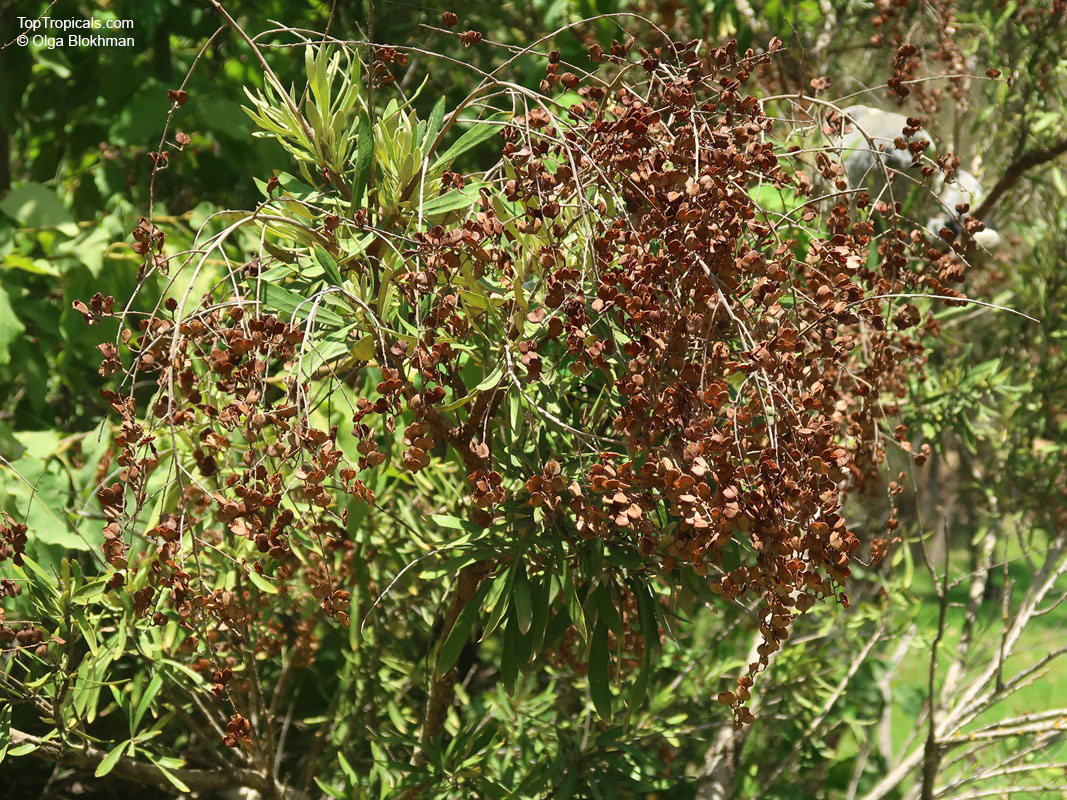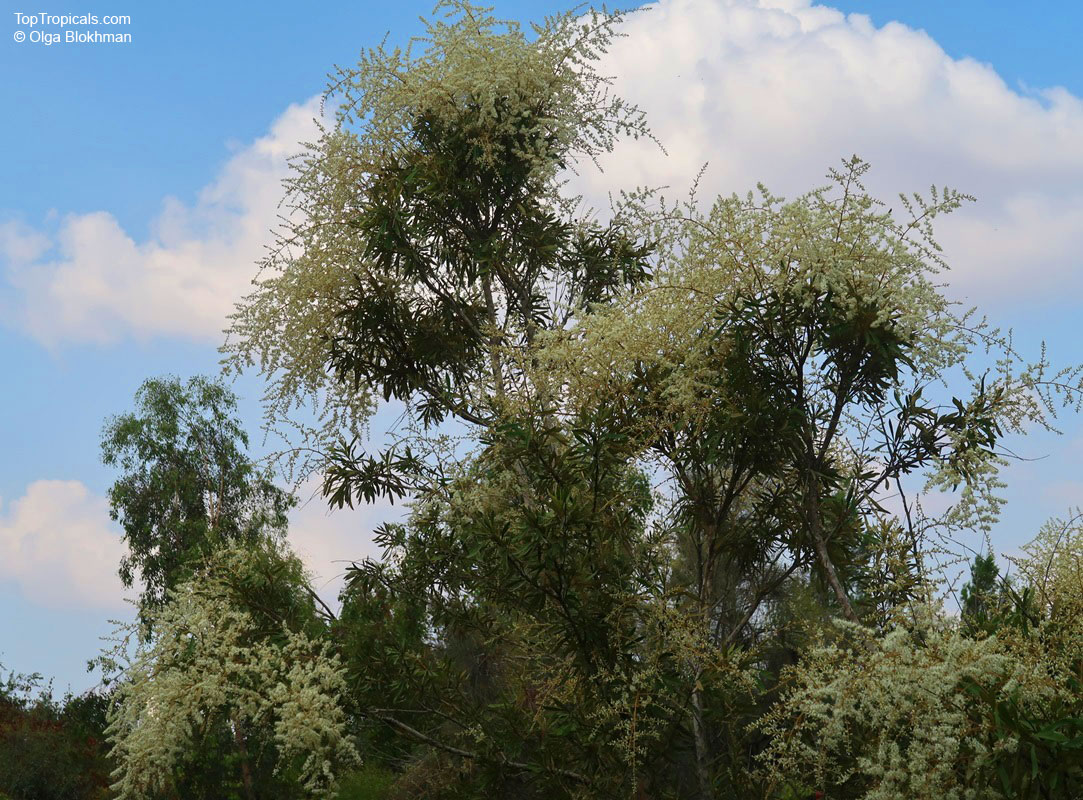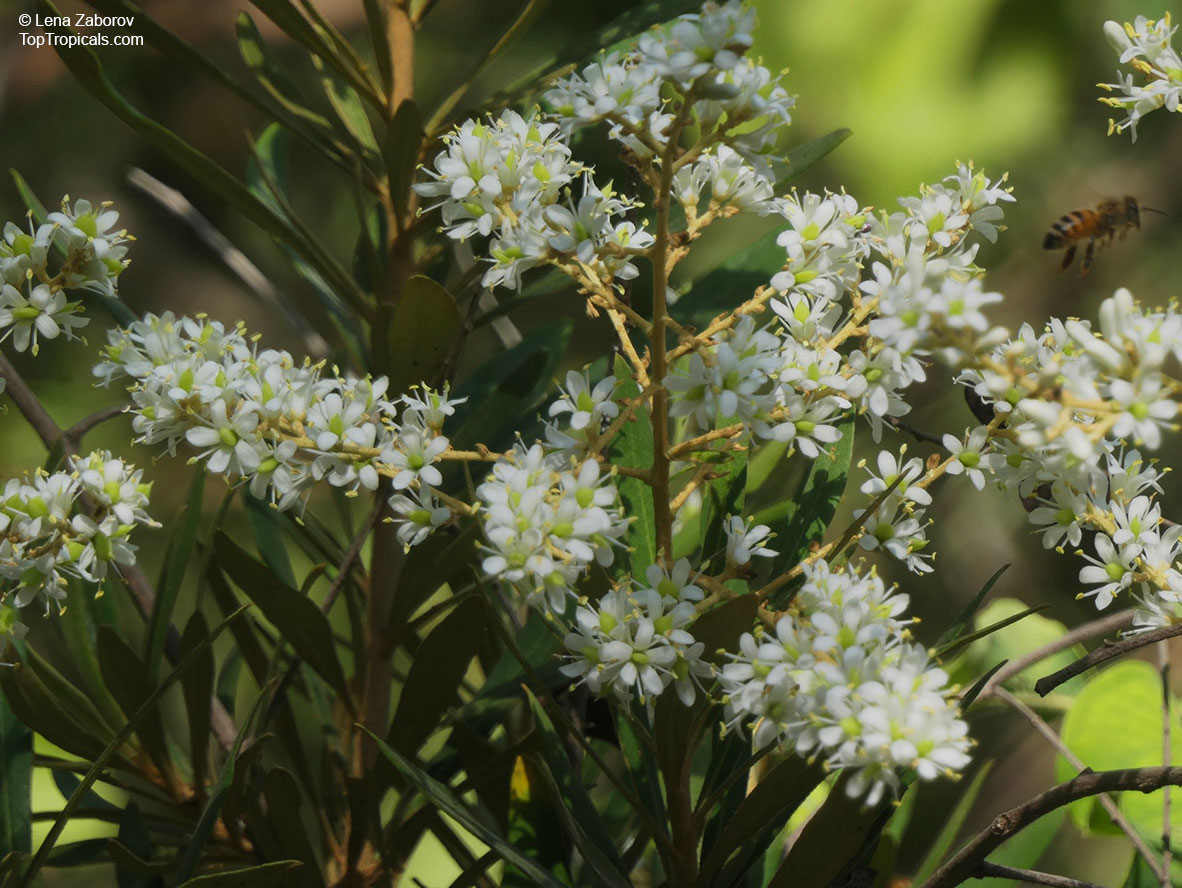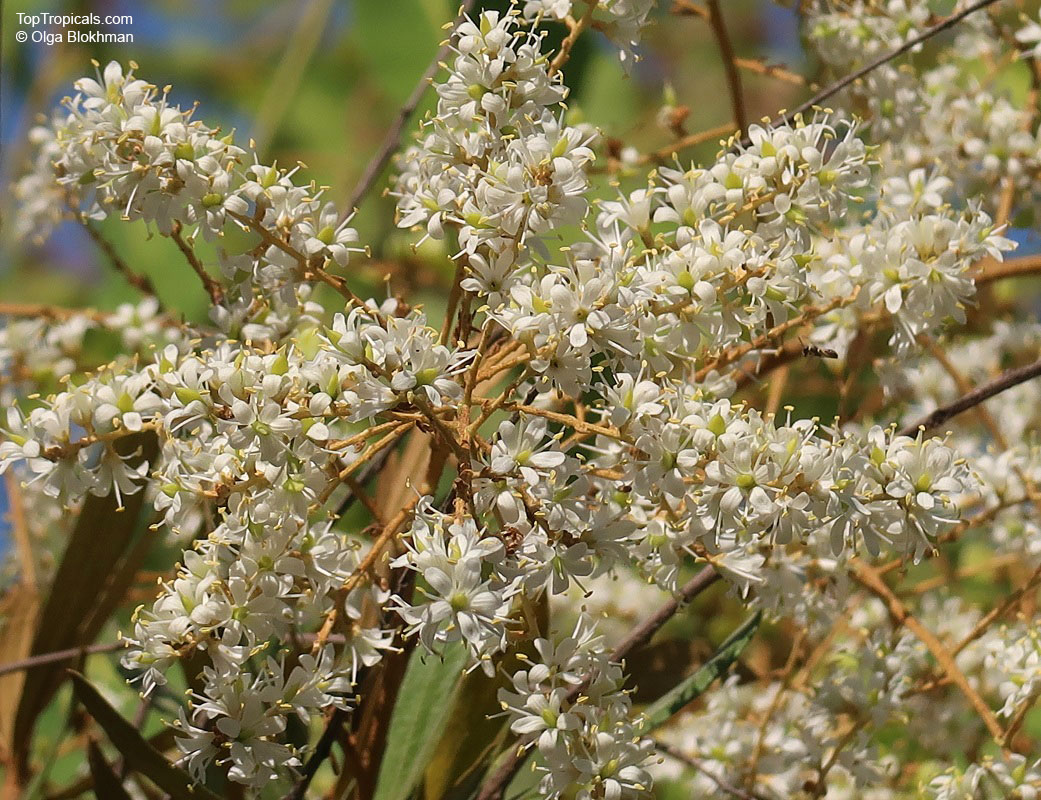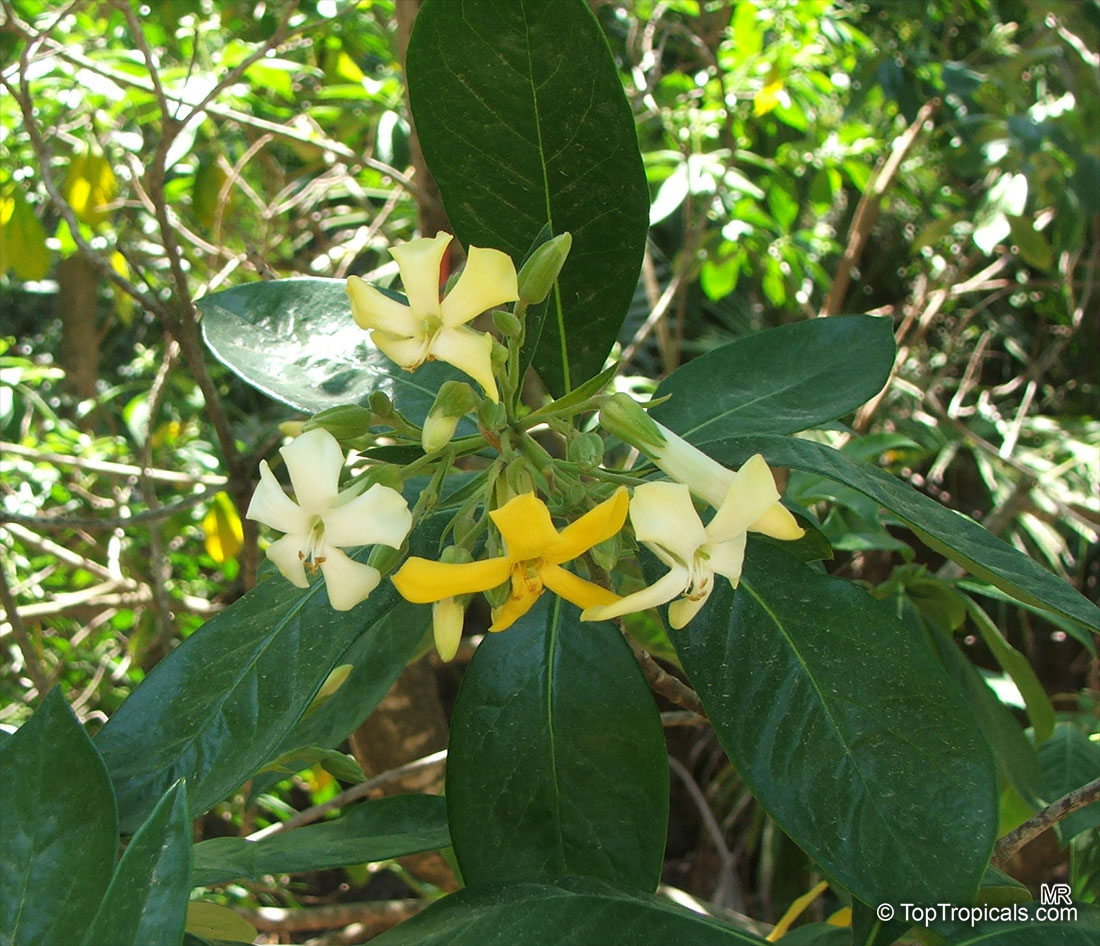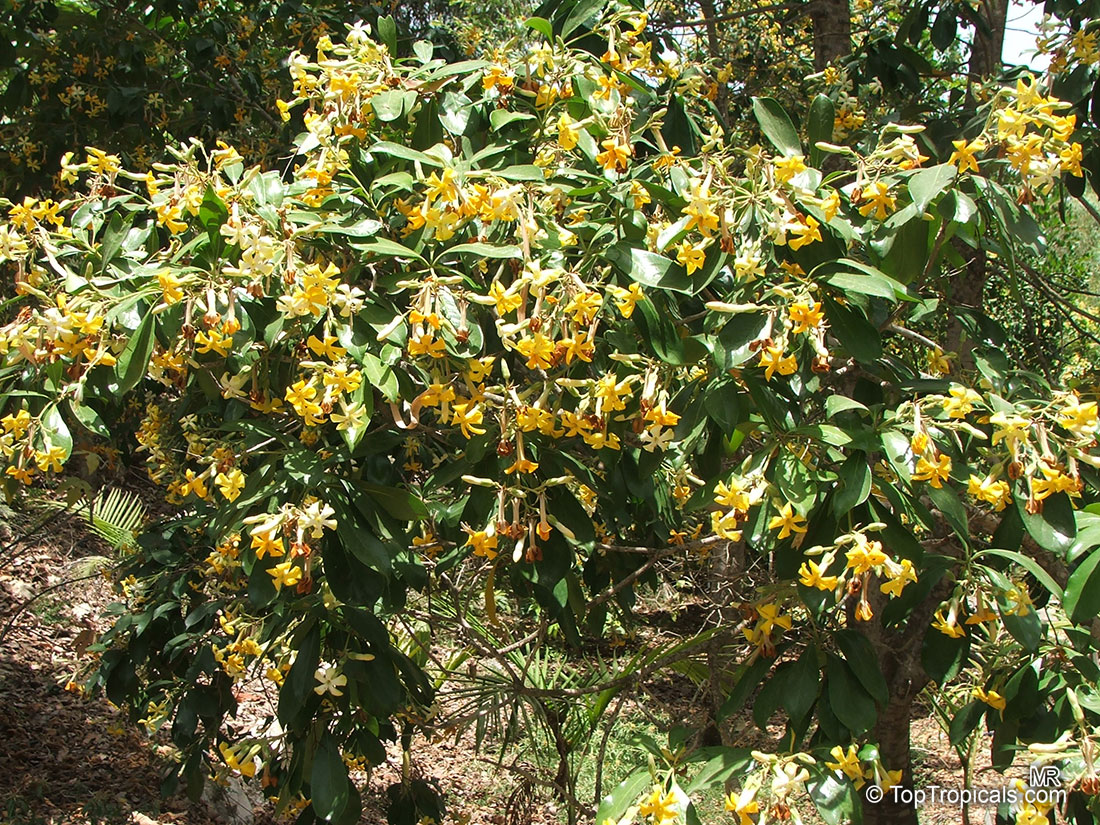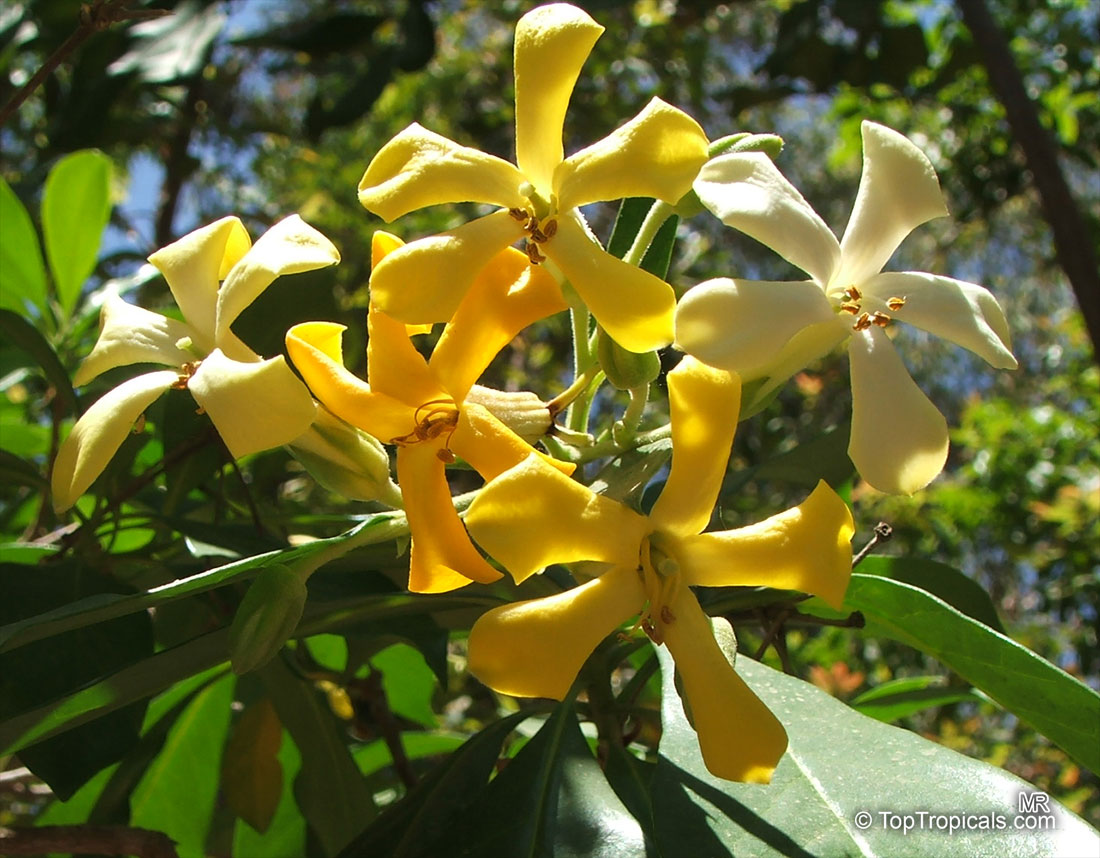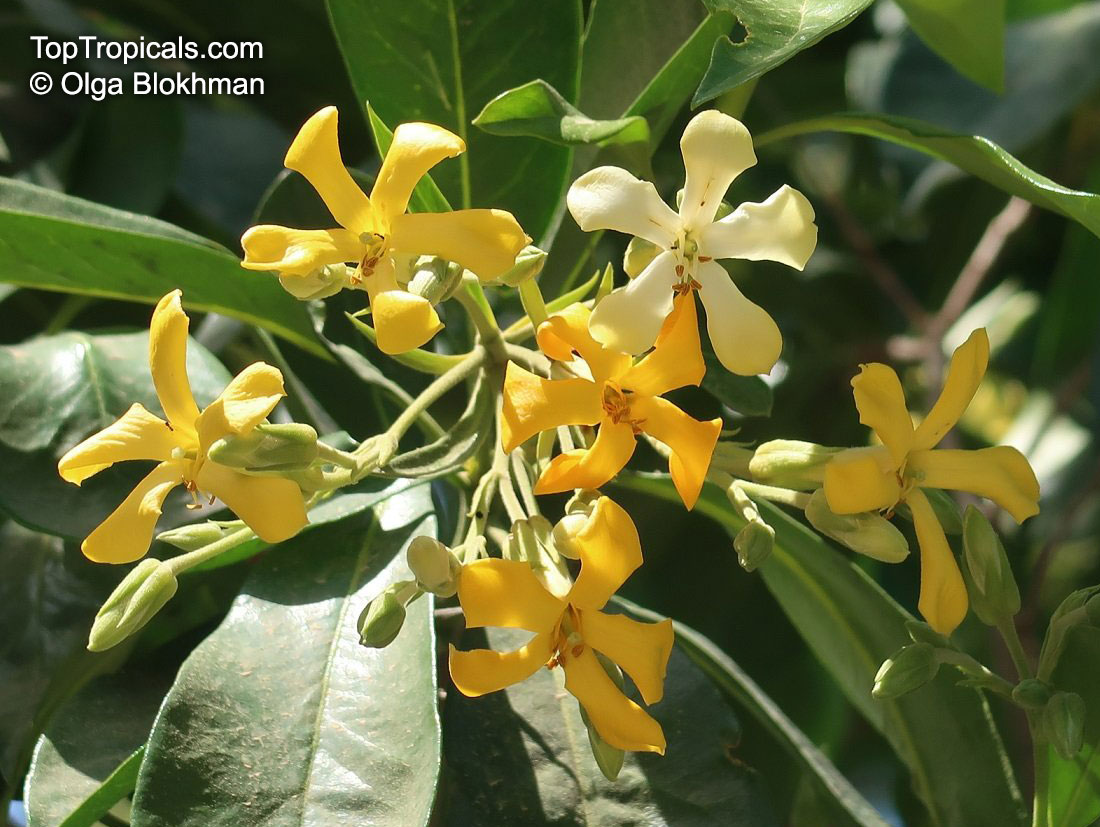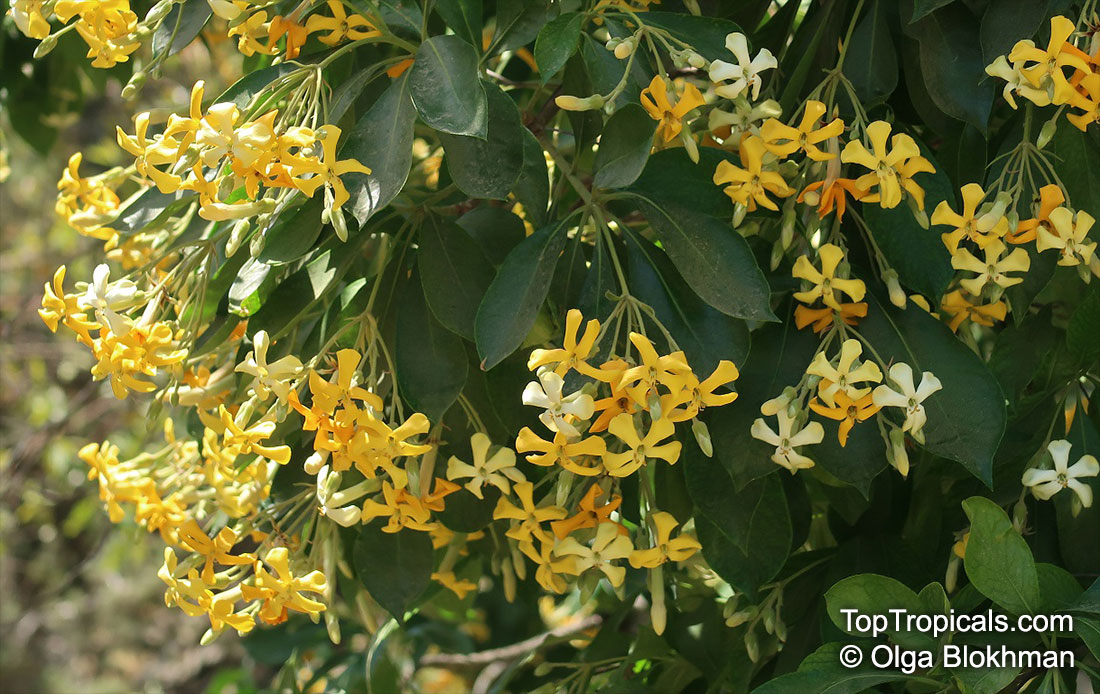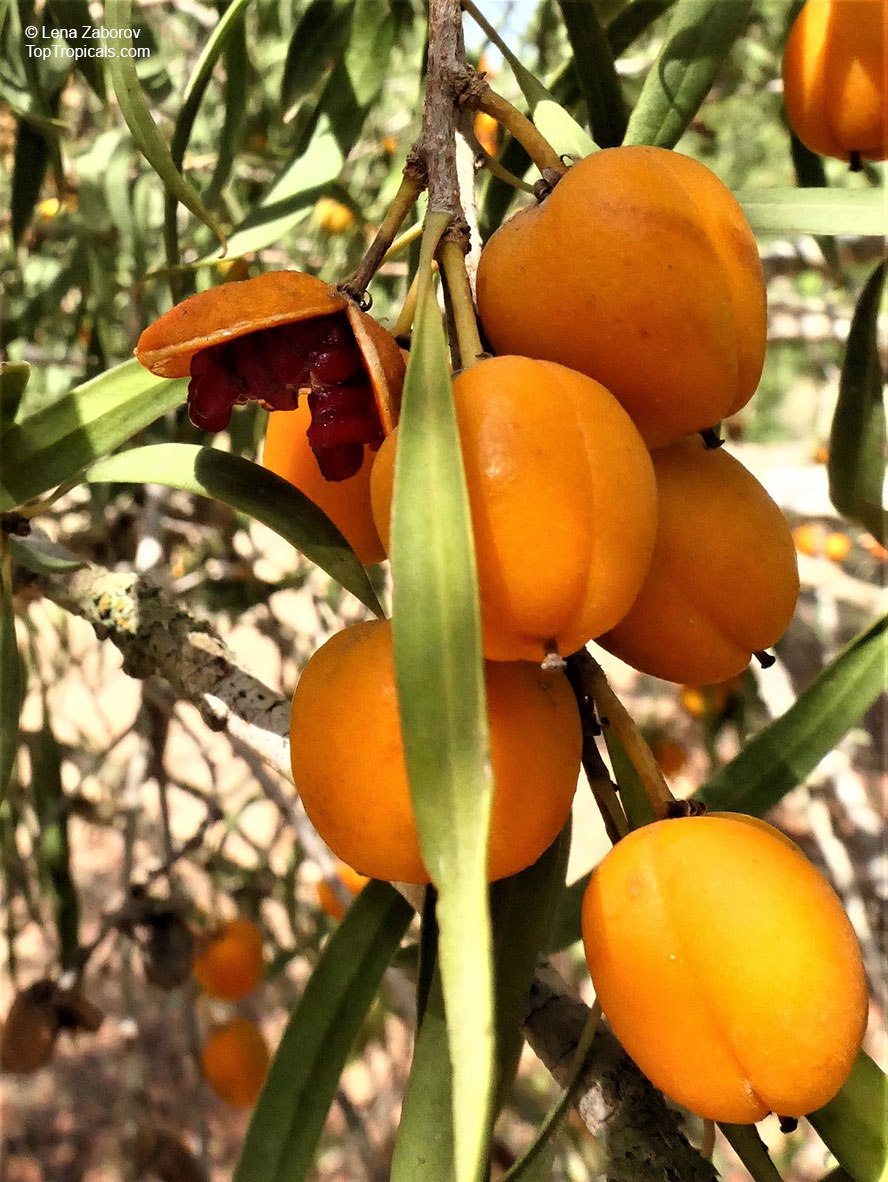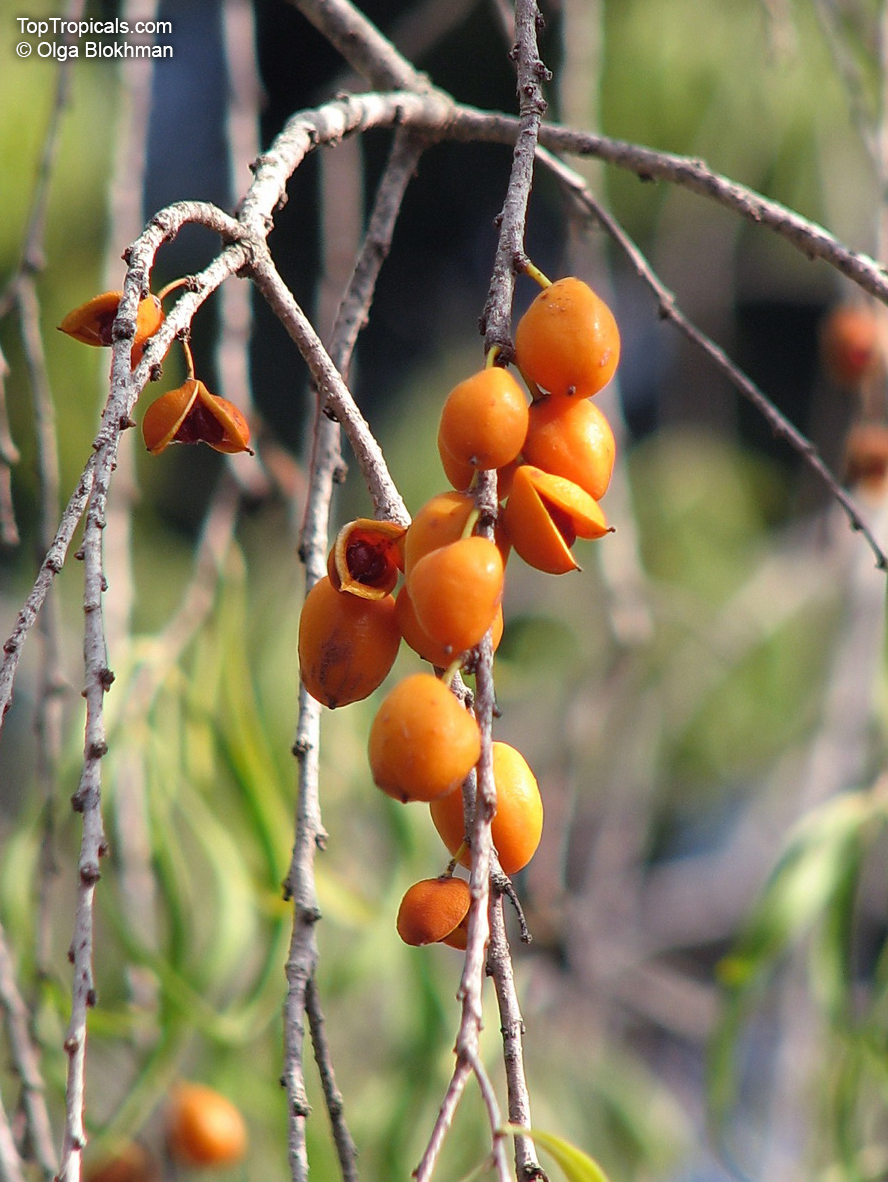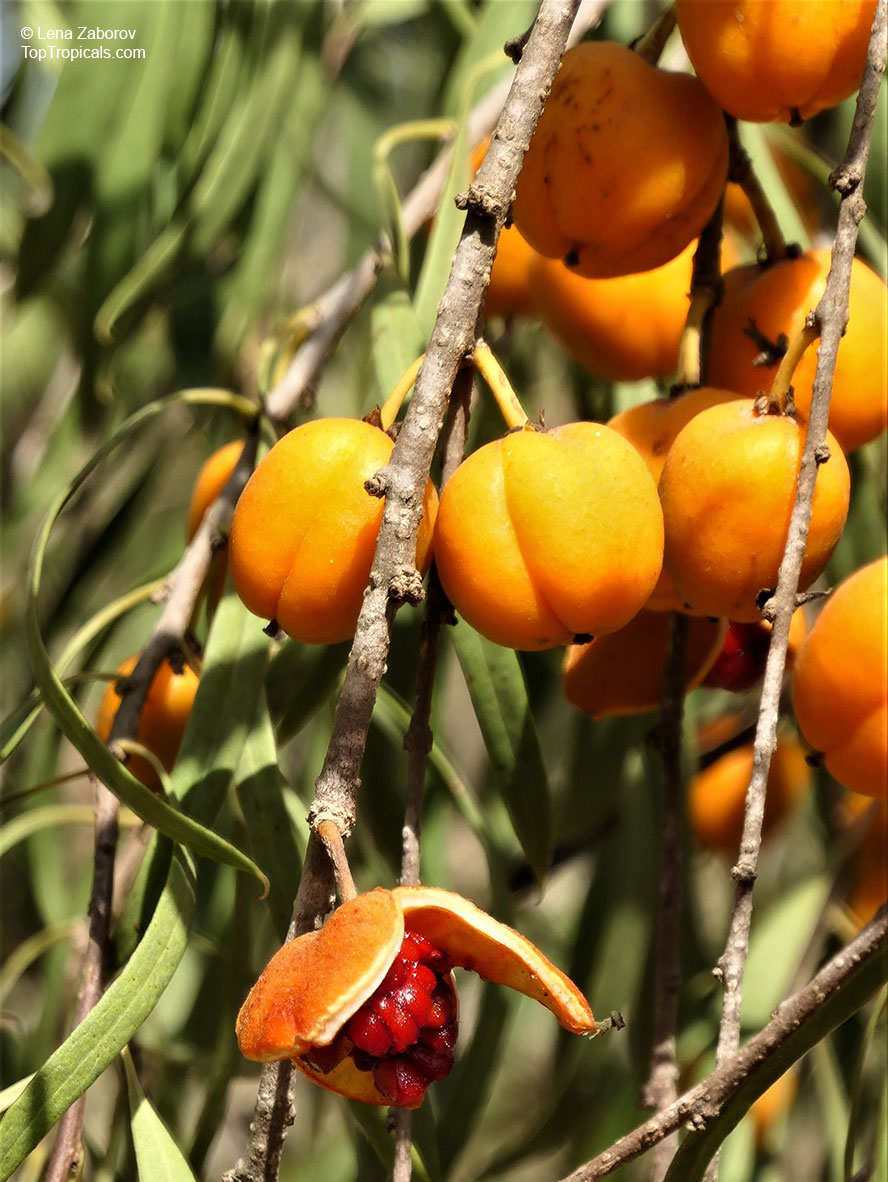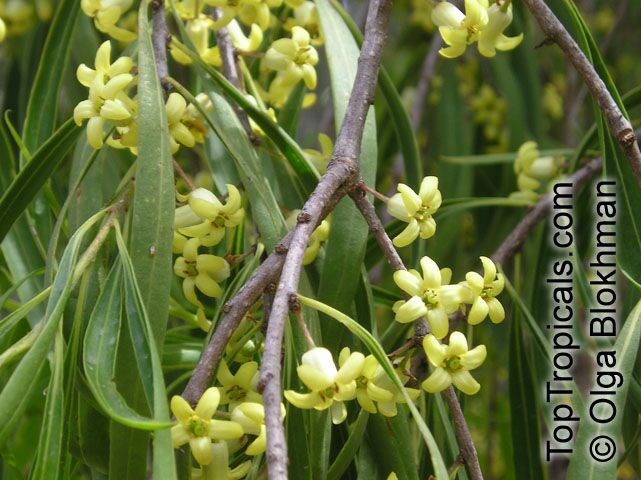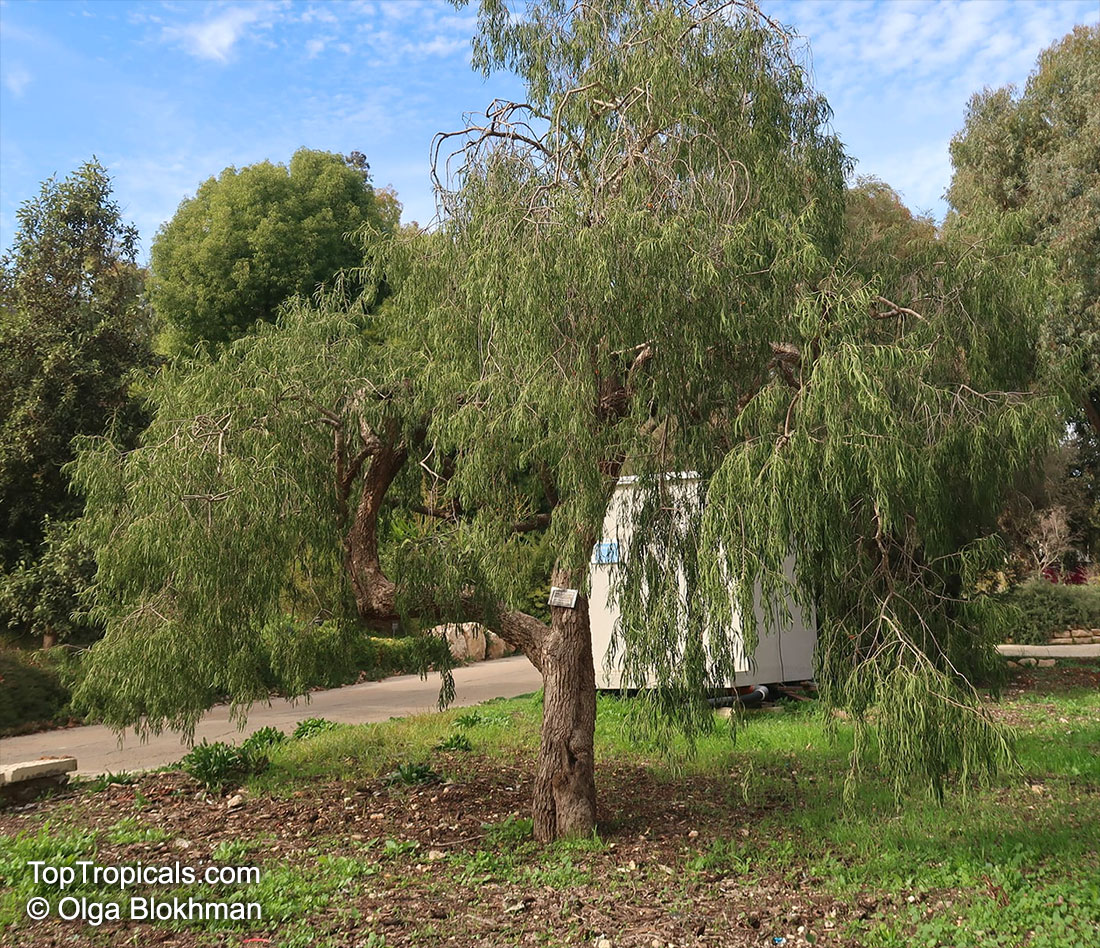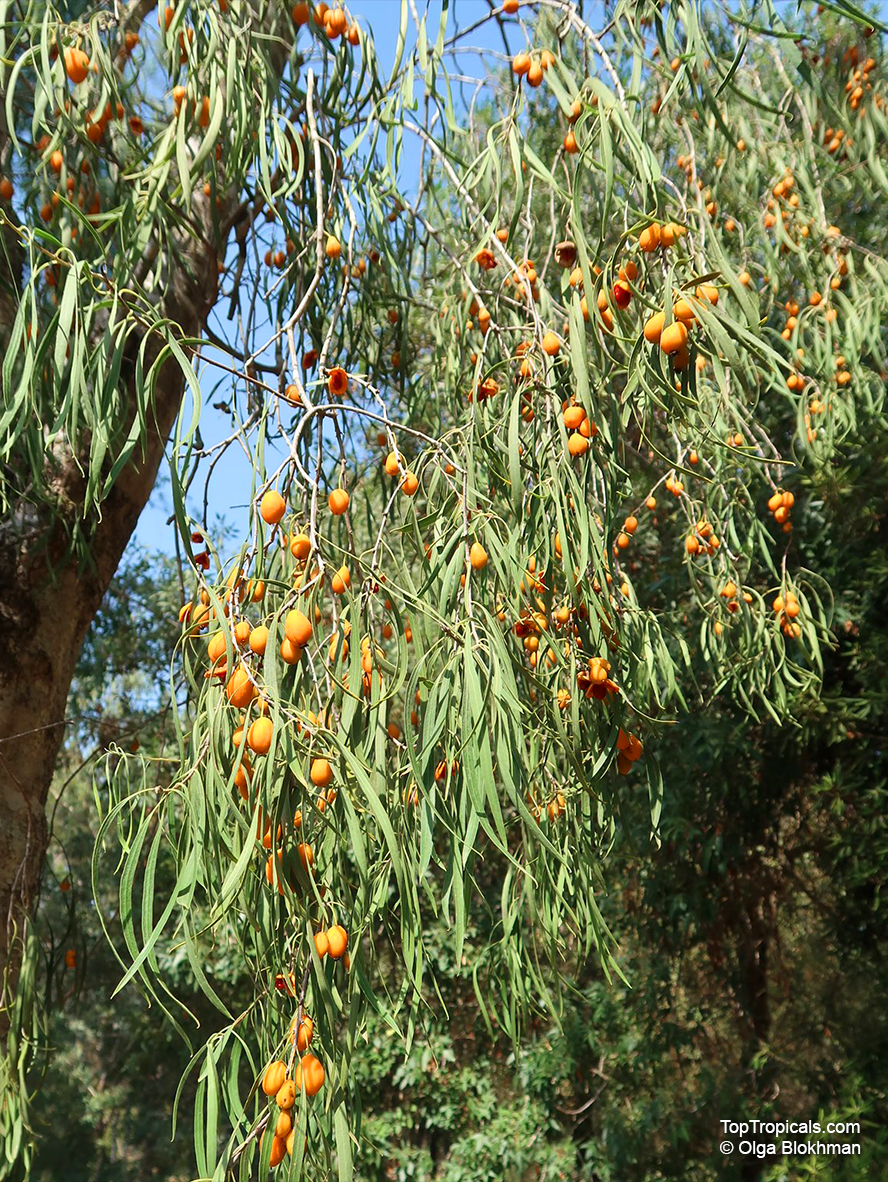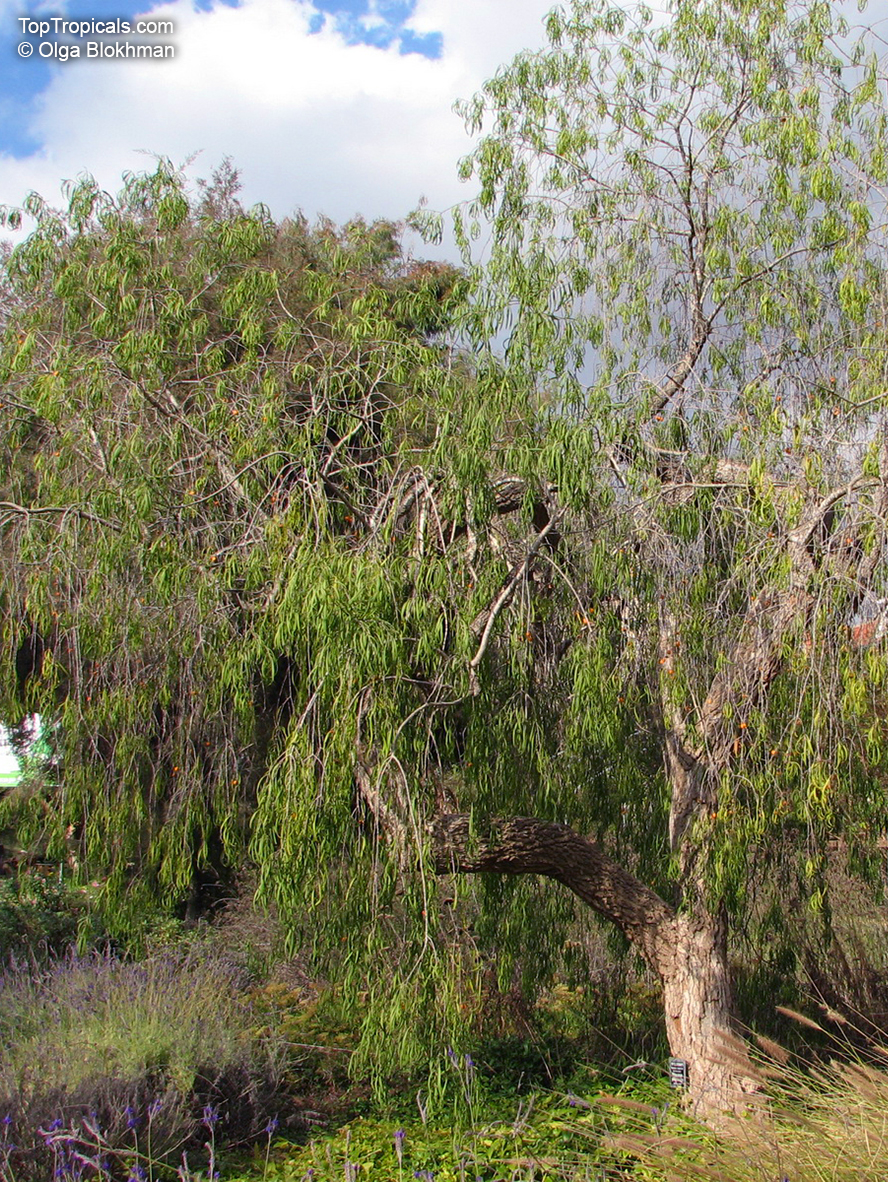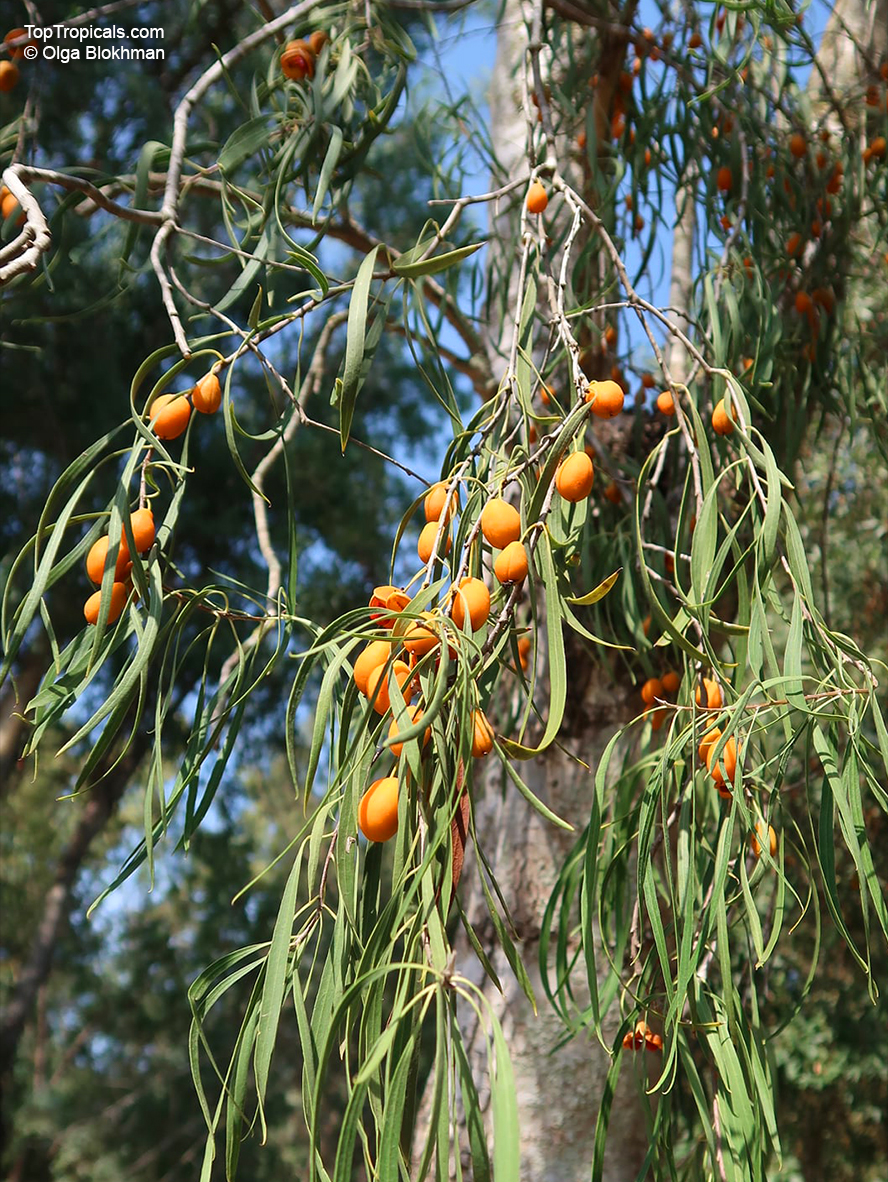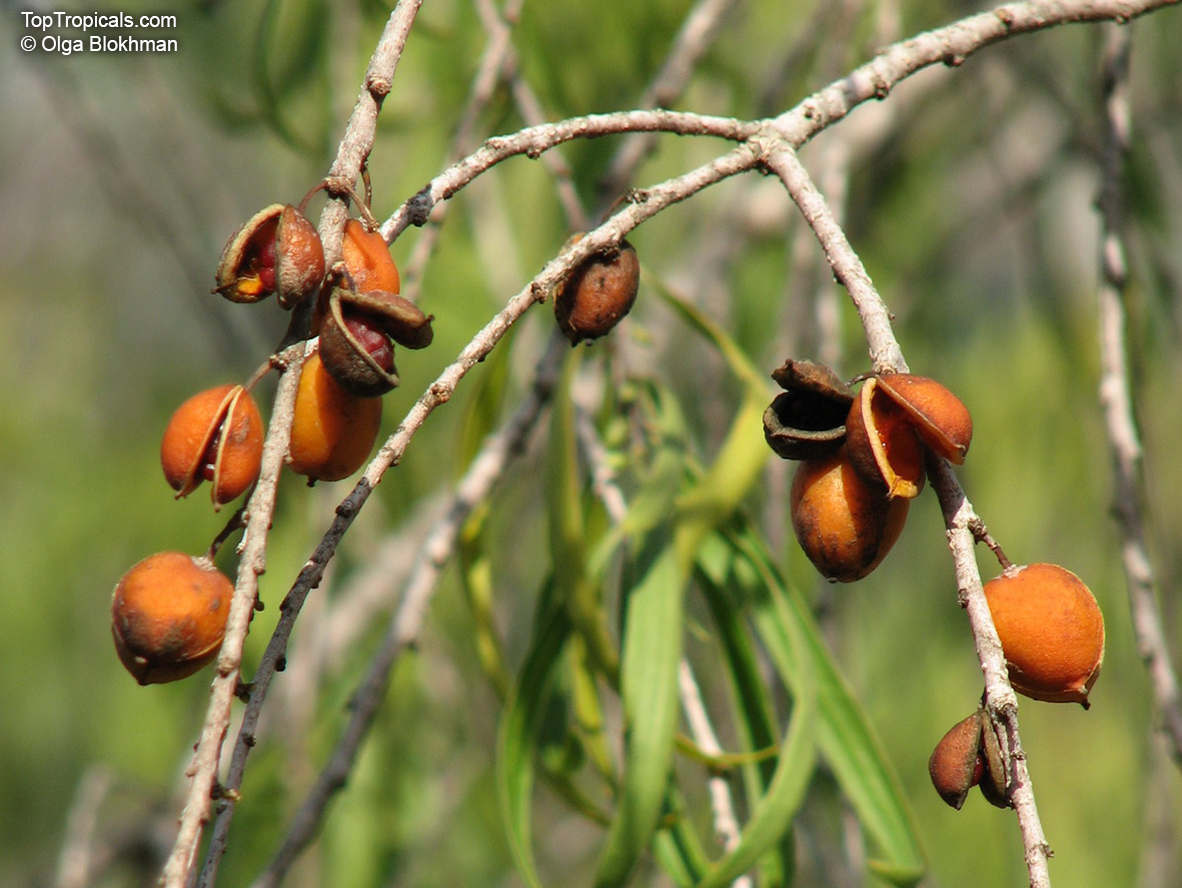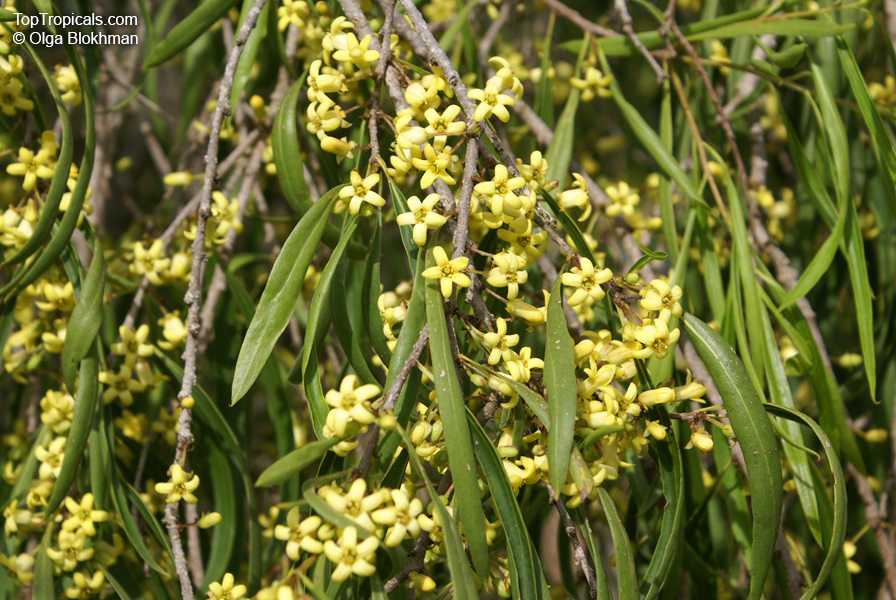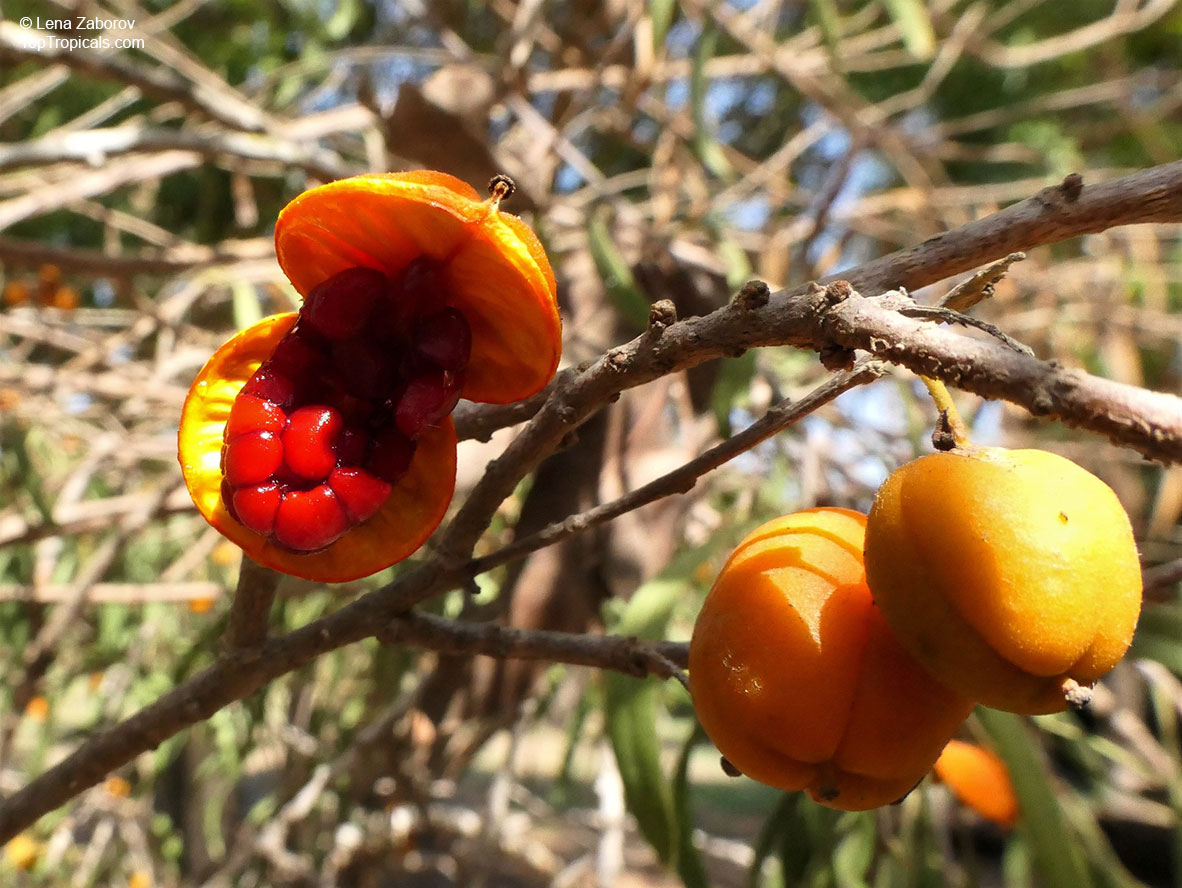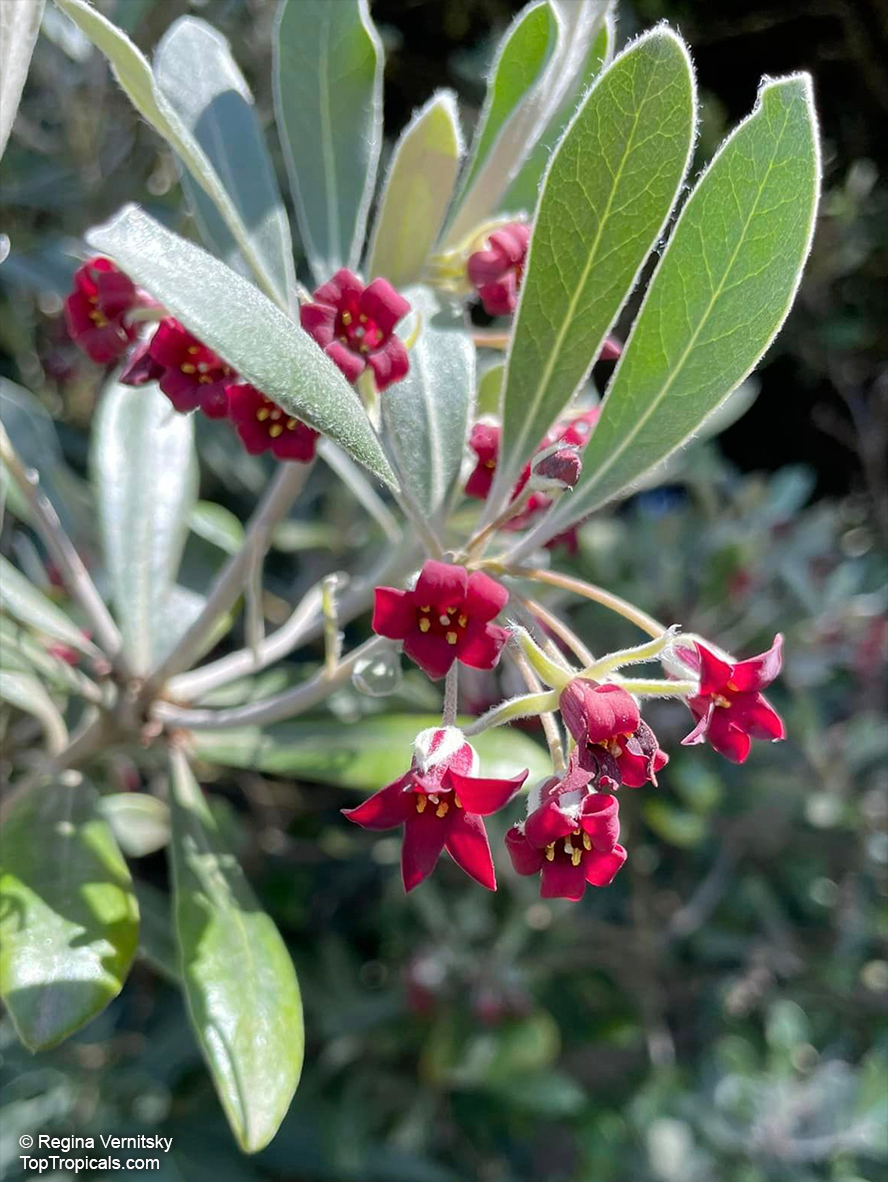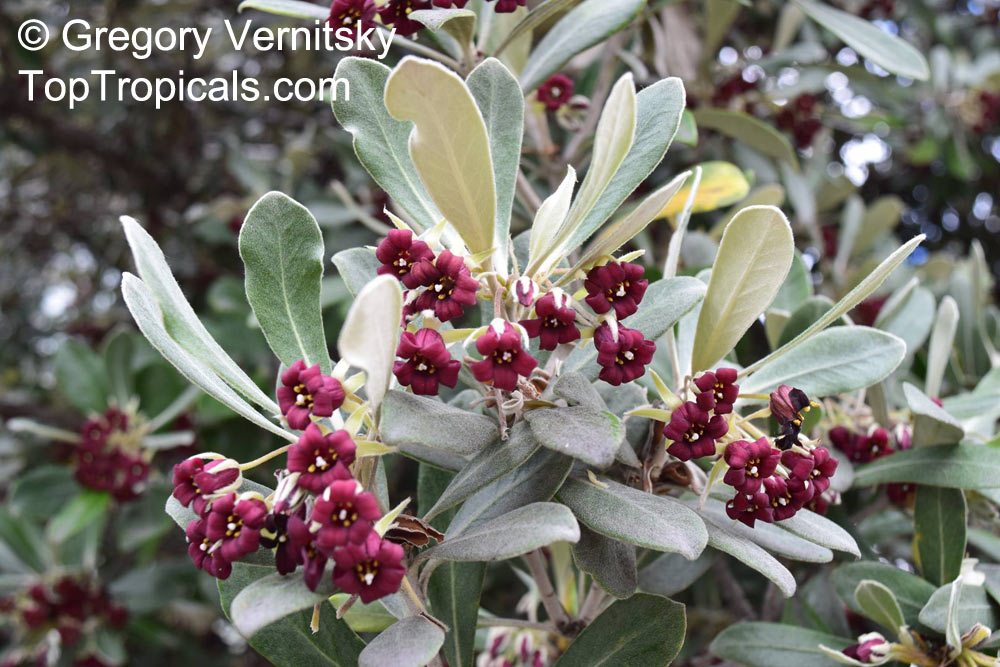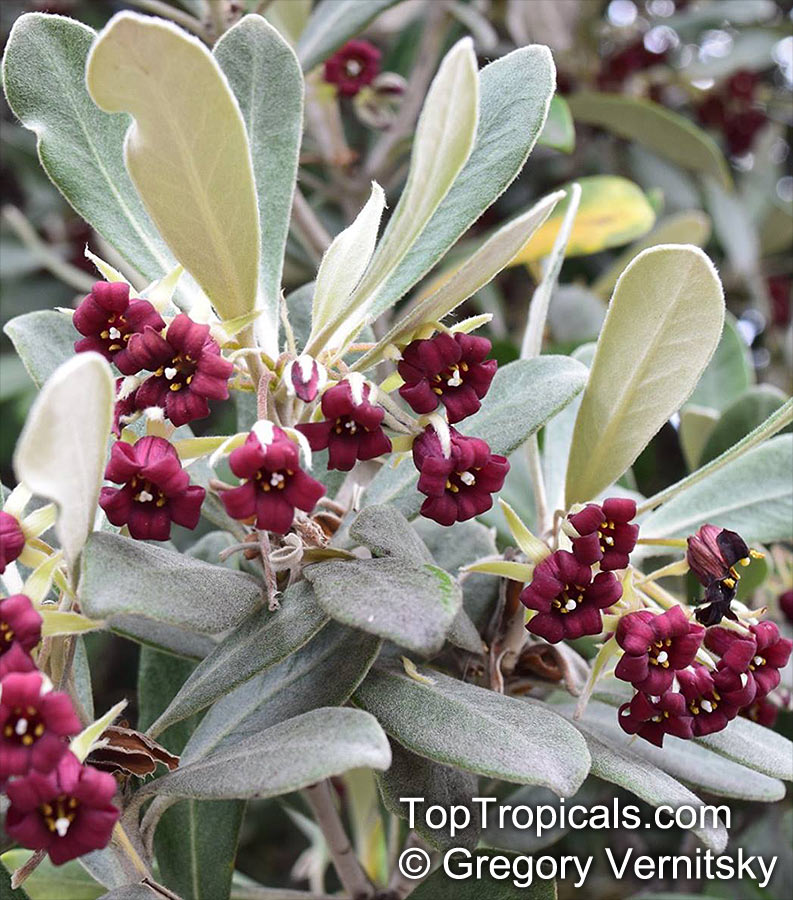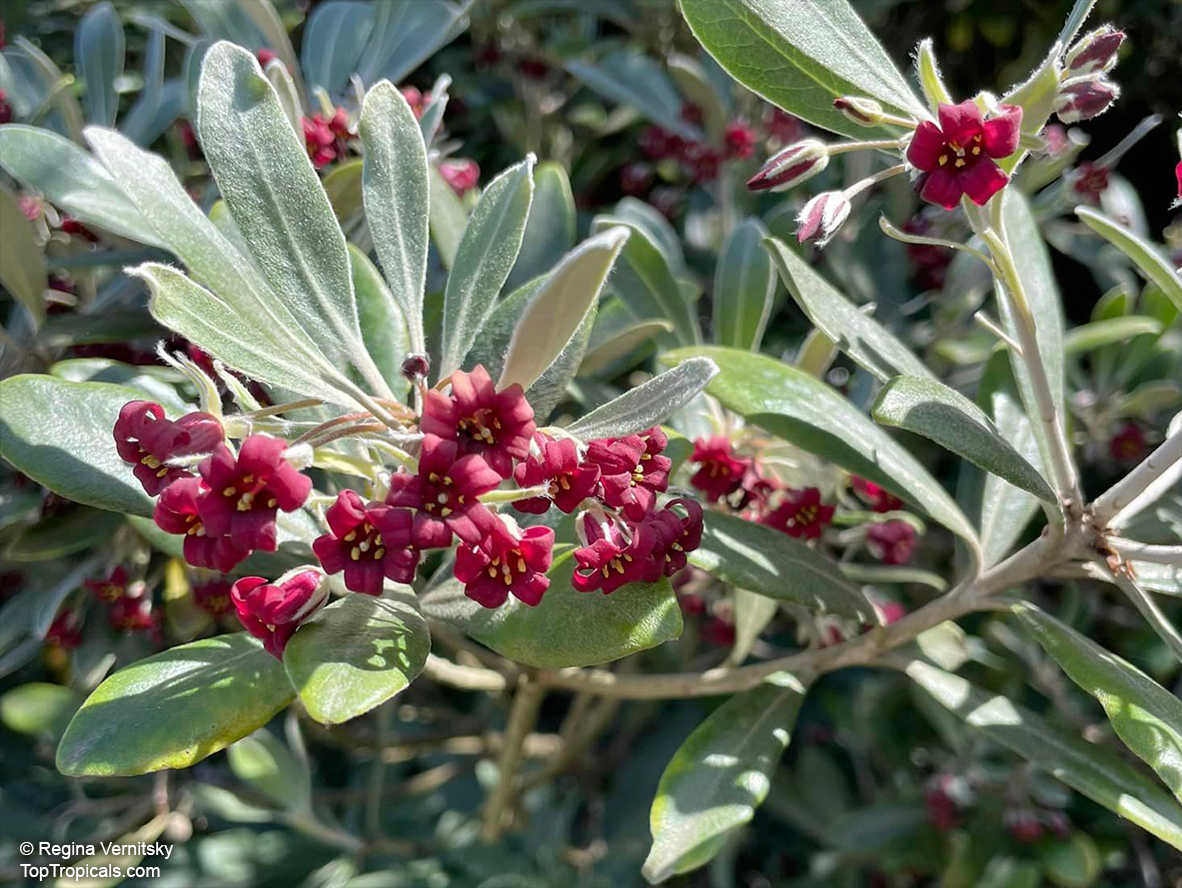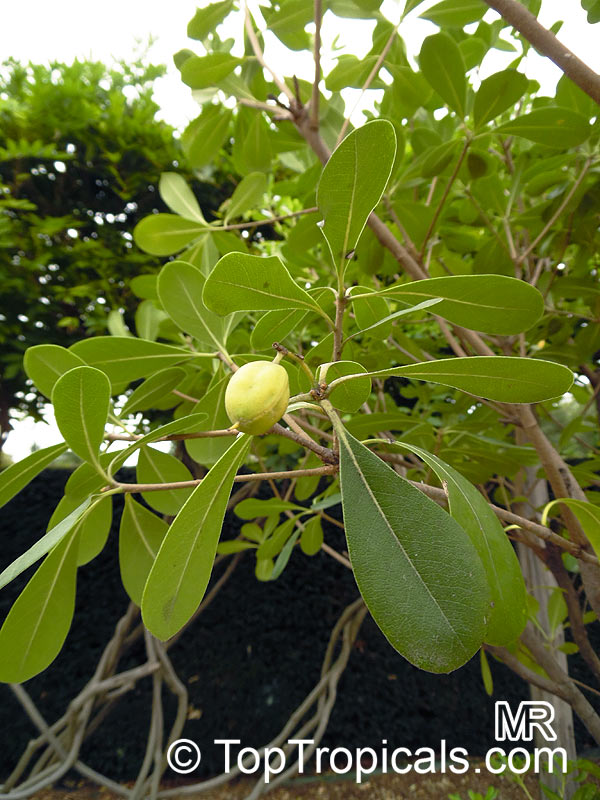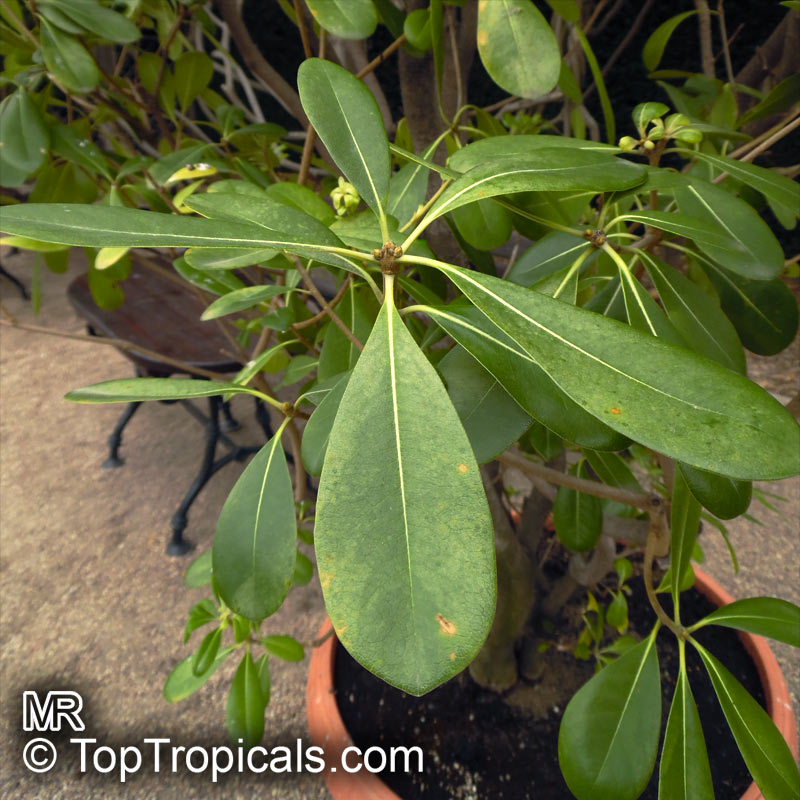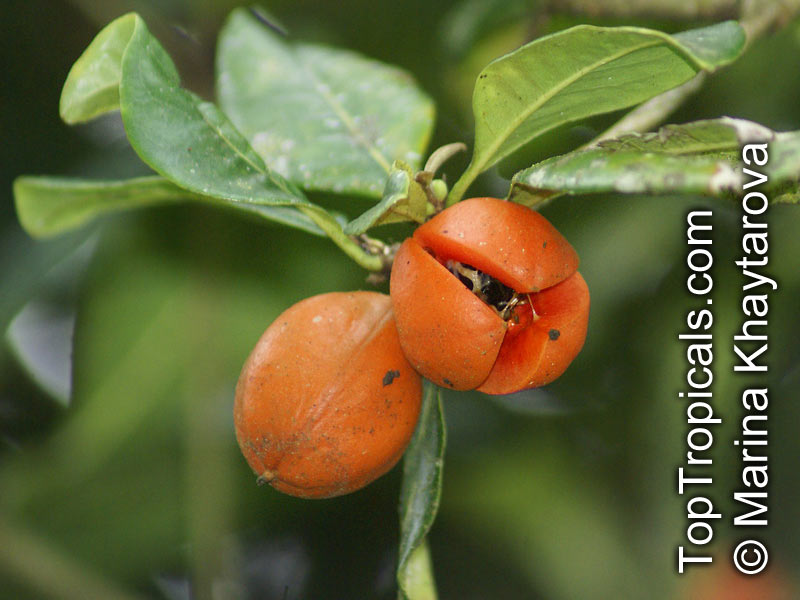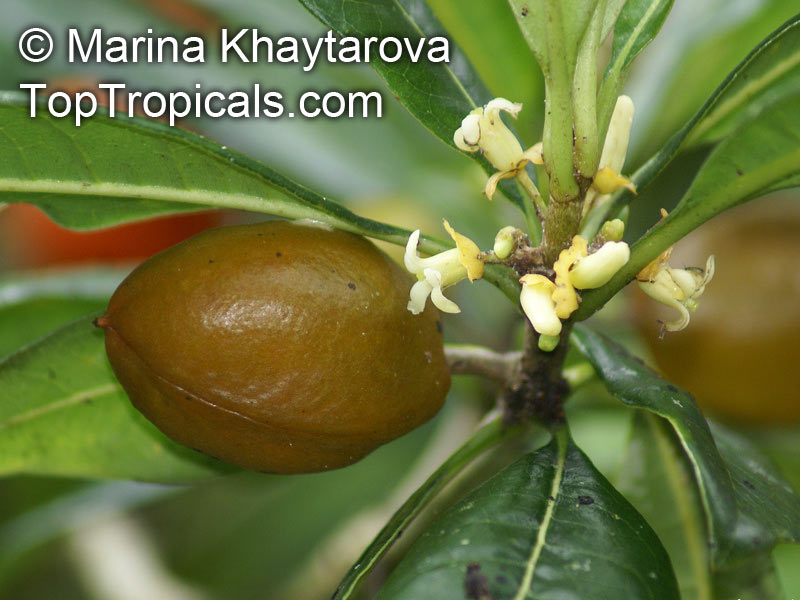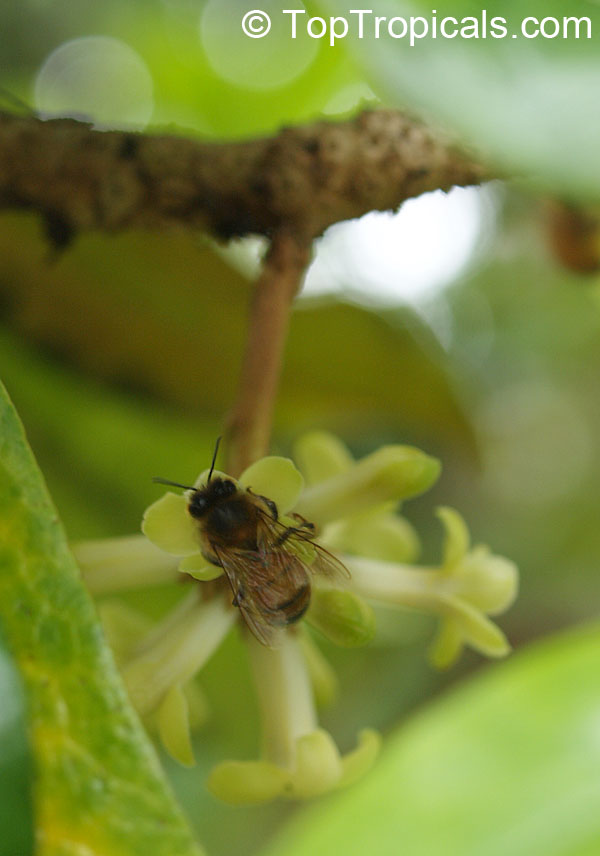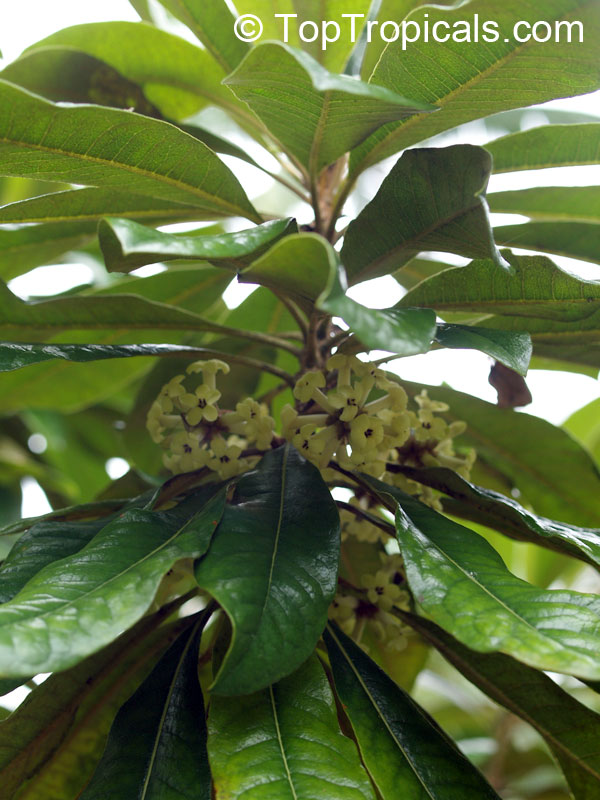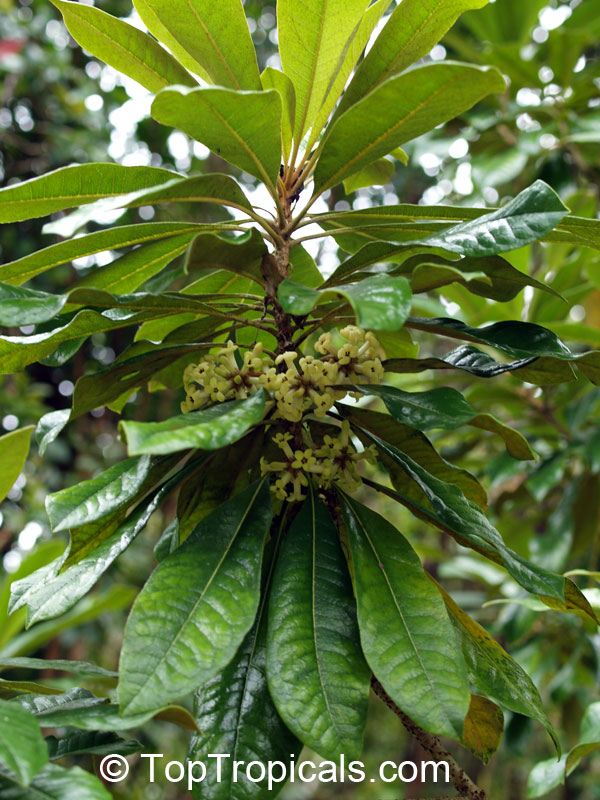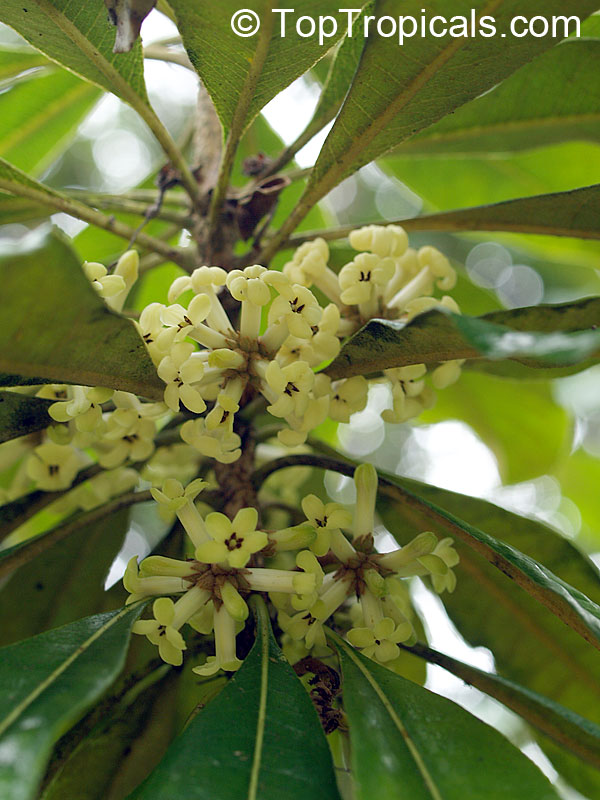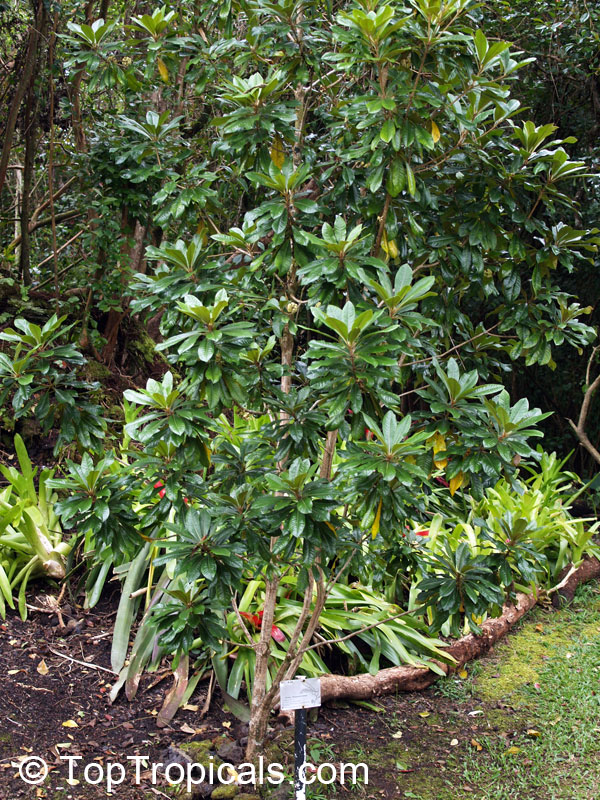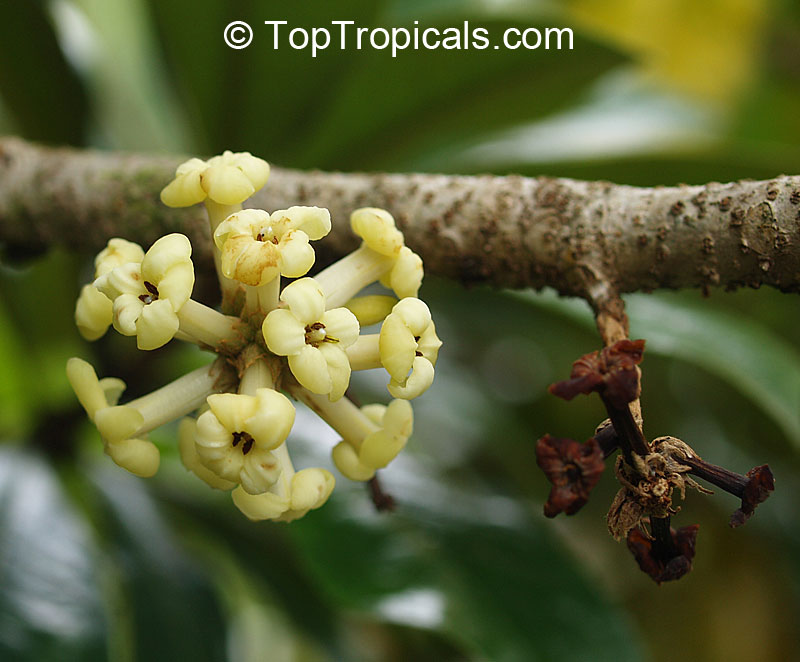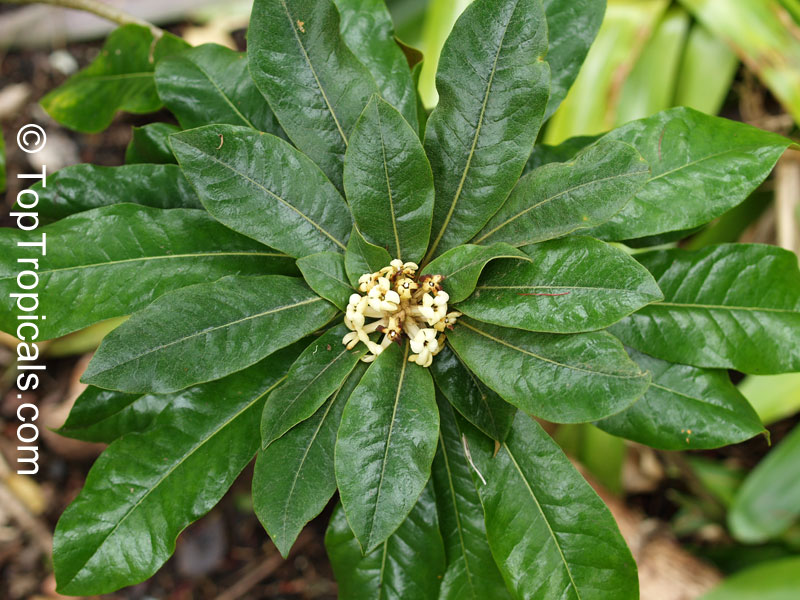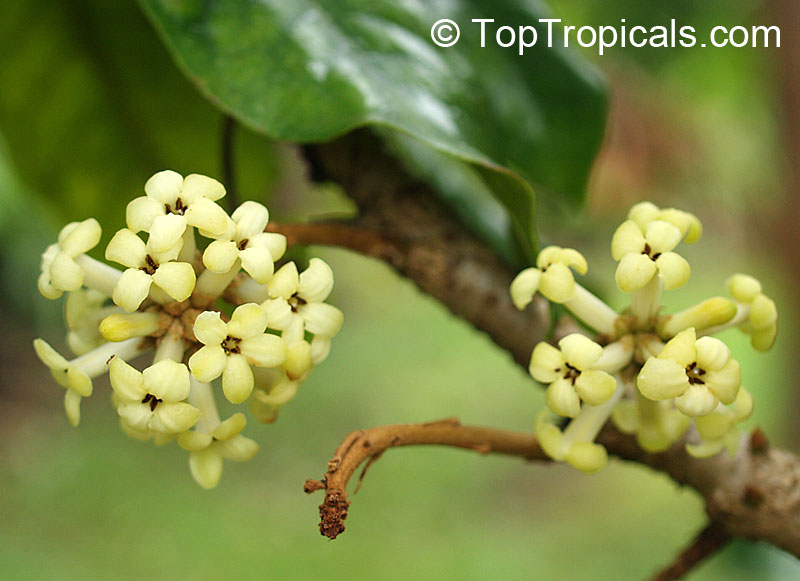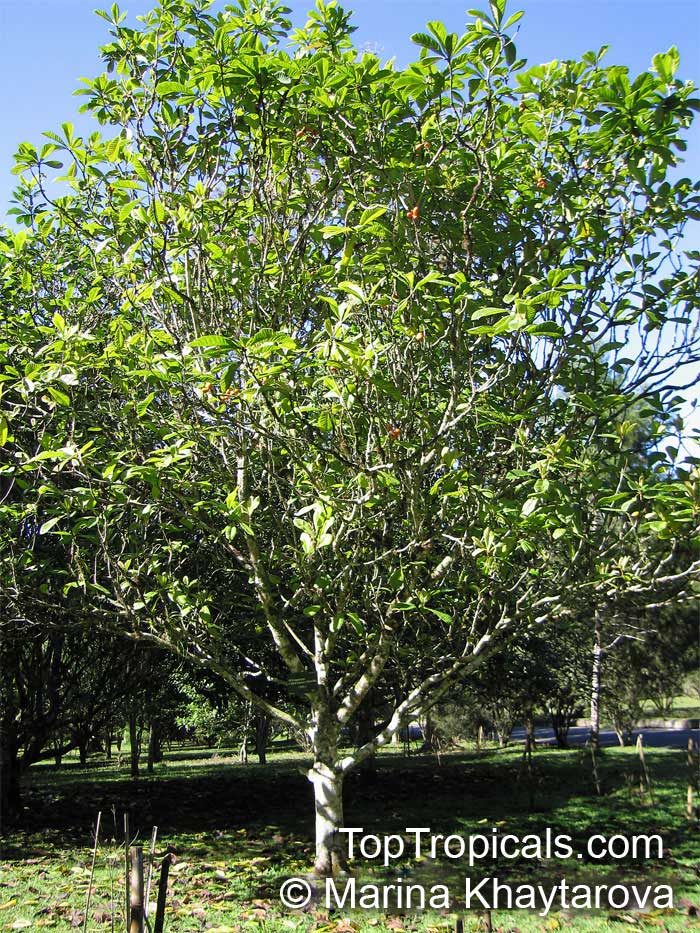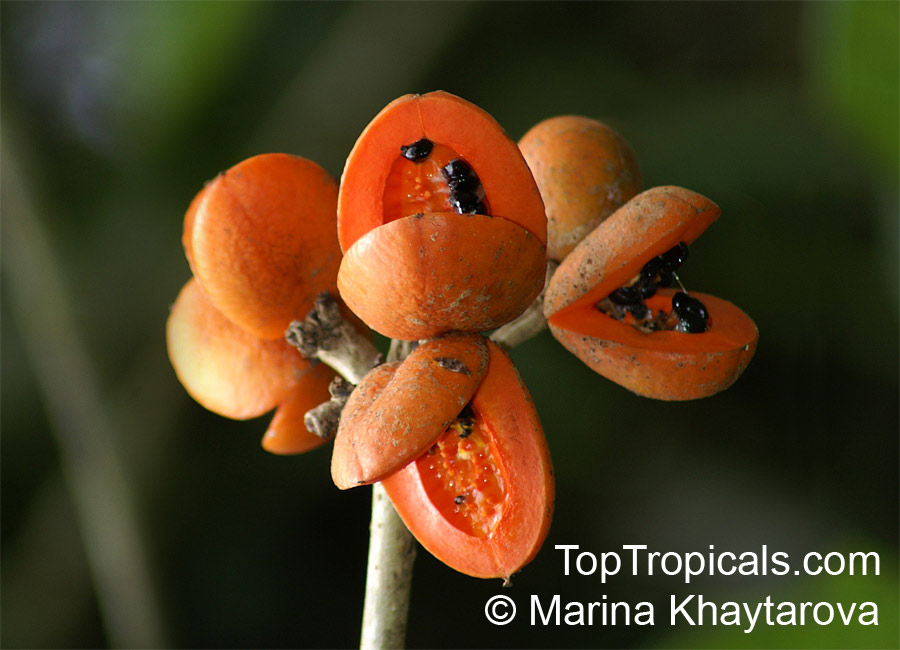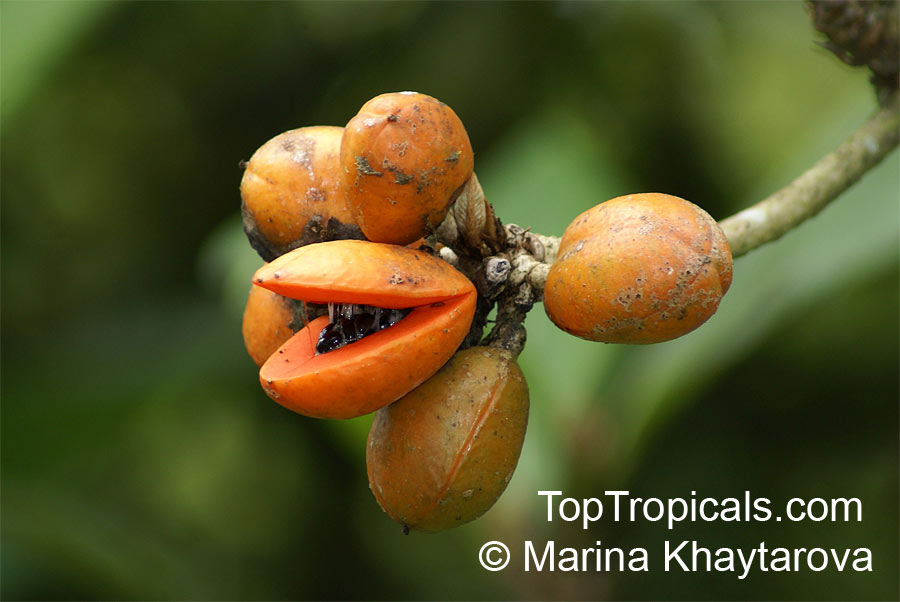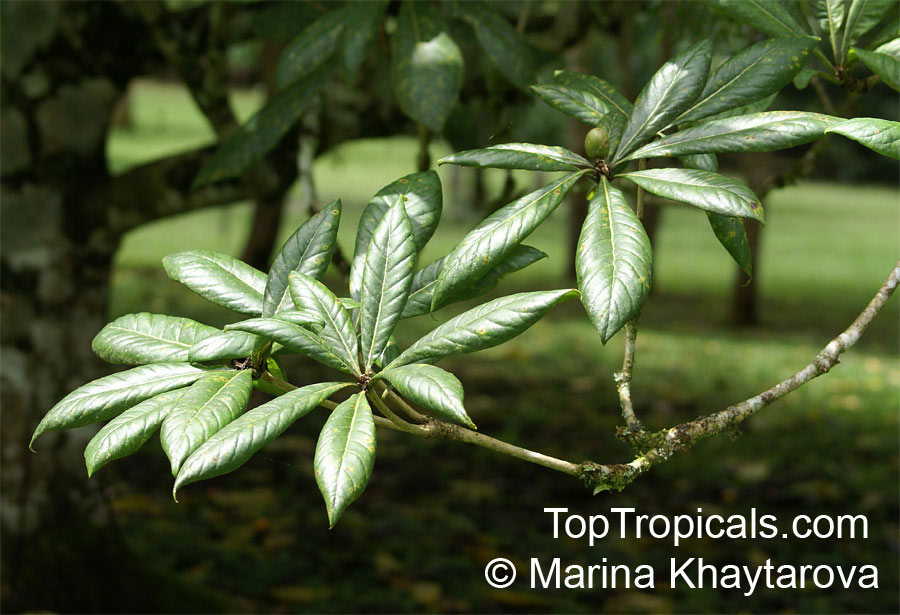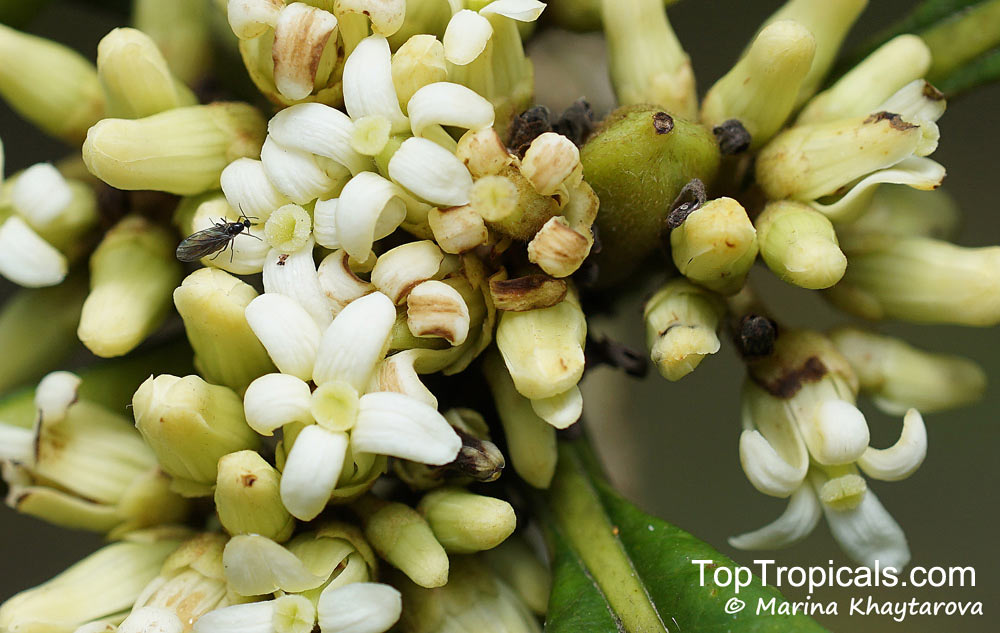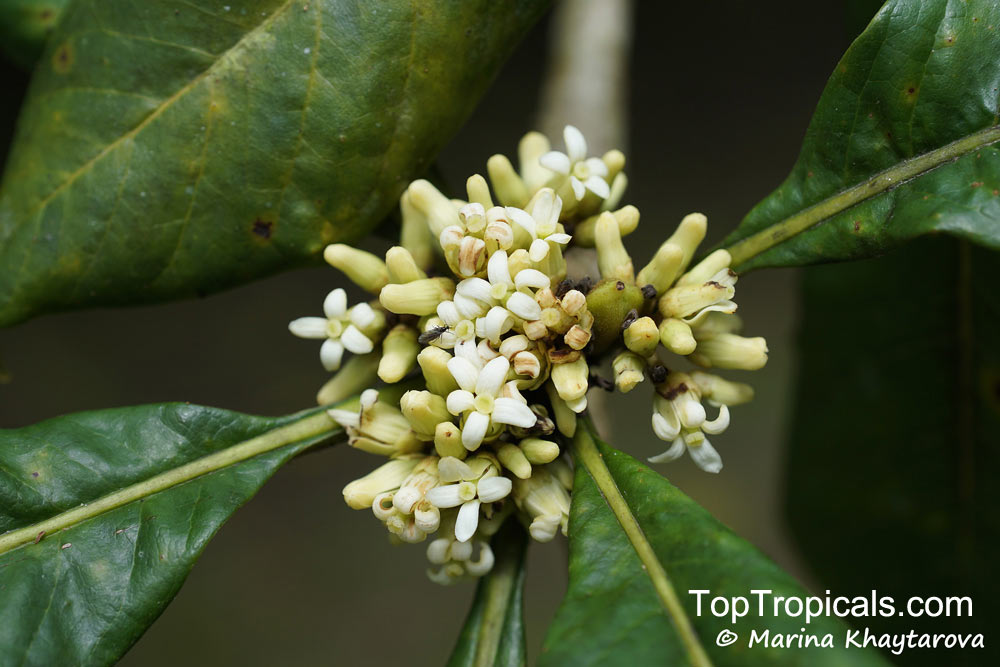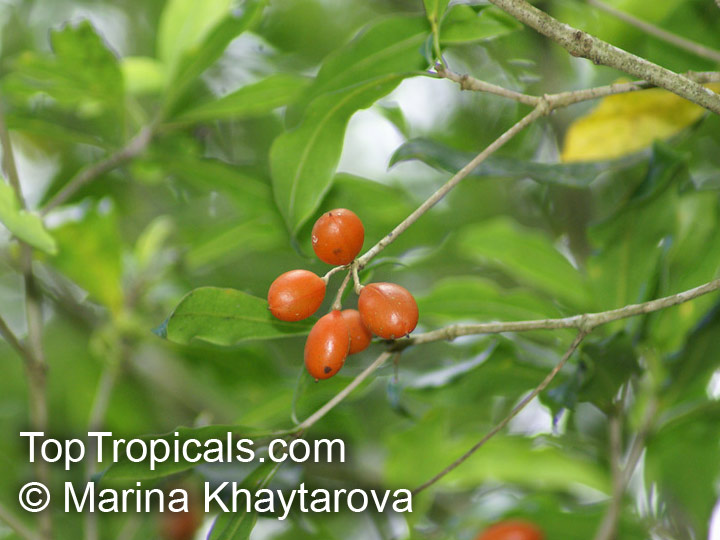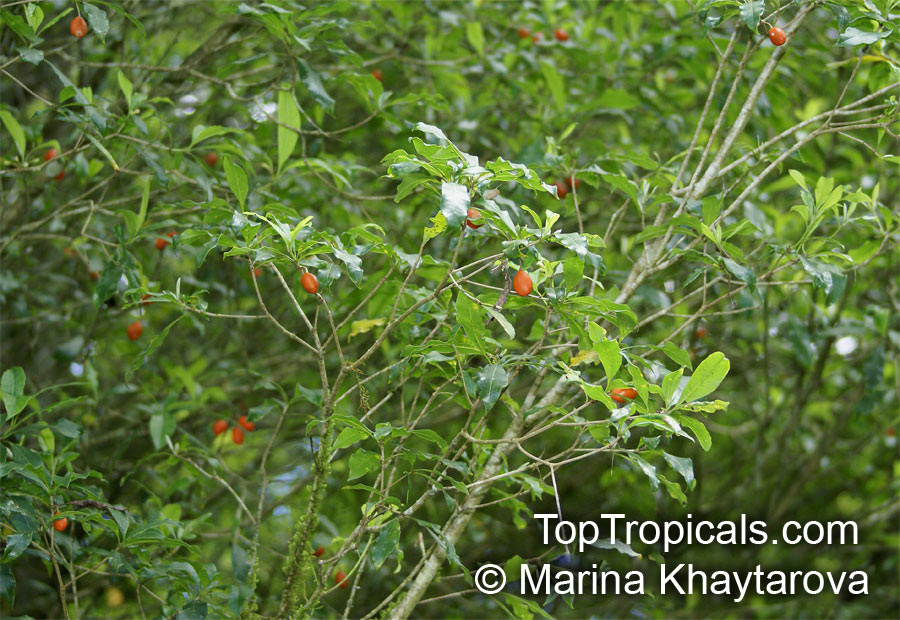Pittosporaceae - Botanical Family
Top Tropicals Plant Encyclopedia
| Number of plants found: 17 | Next | 
|
Go to page: | 1 | 2 |
Botanical names: Auranticarpa rhombifolia, Pittosporum rhombifolium
Common name: Diamond Pittosporum
Family: Pittosporaceae
Origin: Australia








However it is called Diamond Pittosporum due to the shape of the leaves. It is generally inconspicuous until it flowers - when the whole tree becomes a mass of white - and then the tree becomes orange due to the enormous volume of orange fruits.
Botanical name: Bursaria incana
Common names: Prickly Pine, Box Thorn, Native Box, Native Olive, Mock Orange
Family: Pittosporaceae
Origin: Australia






Bursaria incana is endemic to northern Australia. This Bursaria occurs throughout most of Queensland apart from near the coast and the arid inland, and in isolated populations in the northern part of the Northern Territory.
Bursaria incana is a tall shrub or small, sparse tree, 3-7metres tall. Young branches are covered with soft white hairs and young plants carry thorns.
Flowers are creamy-white, sweetly scented, about 1.2 cm in diameter and borne in large, dense terminal panicles. Flowering period is February to April and the flat, brown seeds are contained in flattened, purse-shaped capsules.
Full sun and well drained conditions are required.
Botanical name: Hymenosporum flavum
Common names: Native Frangipani, Queensland Frangipani, Sweet Cheesewood, Sweetshade
Family: Pittosporaceae
Origin: Australia







A medium-sized evergreen tree, up to 18-21ft tall. It is the only member of the genus Hymenosporum (from the Greek hymen (membrane) and sporos (seed), referring to the membranaceous wing on the seed). It is a popular garden subject because of its glossy foliage and flowers. Leaves are simple, alternate 2" - 6", soft, dark green above, paler and sometimes a little hairy below. Juvenile leaves toothed. Flowers are the heavily perfumed cream darkening to yellow on slender stalks at ends of branch lets, the flowers are also known to attract birds and bees; however, be aware this tree can be messy when the flowers begin to drop off. Blooming time is March - November. Fruits of brown irregular capsules splitting into 2 to reveal numerous flat winged seeds. Not edible fruits are ripen in December - April. Propagation: Seed germinates within a few weeks. Best planted in a sunny, wind-protected area, watering needs 4 times monthly. The hymenosporum flavum can tolerate semi-shade conditions. During the early years, it is best to stake the tree to ensure a straight trunk. Hymenosporum flavum seeds are flat and have a papery wing with the small pod at the tip of the seed. They will take up to two months to germinate with a high percentage of germination, it is always best to try for fresh seed with natives but you might be lucky with the packet ones. A fast growing evergreen medium to tall shrub or small tree with dark green glossy leaves. Perfect for any garden, landscape or street planting.
Botanical names: Pittosporum angustifolium, Pittosporum phillyraeoides
Common names: Willow Pittosporum, Butterbush, Native Apricot
Family: Pittosporaceae
Origin: Australia









Plants tolerate much wetter conditions in cultivation than they experience in their native habitat.
Botanical name: Pittosporum crassifolium
Common names: Stiffleaf Cheesewood, Karo
Family: Pittosporaceae
Origin: New Zealand






Pittosporum crassifolium is an easy to care for evergreen shrub that prefers full sun and regular watering. It's a resilient plant that tolerates salt spray, making it suitable for seaside and marshy environments. This species of Pittosporum is an ideal looking to add some vibrancy and texture to your garden, particularly if planted in groups. Growing best in USDA hardiness zone 9-11, the Stiff Leaf Cheesewood can thrive in warm and cold climates alike.
In terms of care, Pittosporum crassifolium is a fairly low maintenance shrub. For optimal growth, they should be watered around 1-2 times per week. In warmer climates, the plant will require a moderate amount of water, whereas cooler climates can get away with less frequent watering. Pruning should be done before flowering, which generally occurs in late winter or spring. This will help encourage new growth while also keeping the shrub at a manageable height.
If grown in colder regions, Pittosporum crassifolium can be planted in a container and kept indoors. When kept in a pot, it is best to water the plant about once a week or so when the soil is dry. Pruning should also be done in the winter or early spring. The plant should be given plenty of sun, either by putting it outside during the day or placing it in the sunniest window. When kept in colder climates, it's important to check the soil from time to time, as it can be relatively soggy during rainy periods or excessively dry during winter. Finally, be sure to give your shrub some fertilizer as needed in order to promote healthy growth.
Botanical name: Pittosporum daphniphylloides
Common name: Pittosporum
Family: Pittosporaceae
Origin: China





A large evergreen shrub with bold leathery foliage up to 23cm long and dense rounded clusters of sweetly scented, soft-yellow, small flowers in spring. Its leaves are much larger than those of the common pittosporum, six to eight inches long and two to three inches wide.
Botanical name: Pittosporum heterophyllum
Common name: Pittosporum
Family: Pittosporaceae
Origin: South China






Botanical names: Pittosporum hosmeri, Pittosporum amplectens
Common names: Kona Cheesewood, Hoawa
Family: Pittosporaceae
Origin: Hawaii








Pittosporum hosmeri (Kona Cheeswood) is a large shrub or small tree native to Hawaii. It can grow to 5-10 feet tall, with a spread of up to 8 feet. Its leaves are long and narrow, up to 10 inches long, and they are dark olive green. Its bark is reddish-brown and smooth.
Pittosporum hosmeri prefers full sun or semi-shade and requires regular or moderate water depending on the climate it is grown in. It does best in USDA Zone 9-11, and can be grown in colder climates in containers. In areas that experience frost and cooler temperatures, it is best to bring the container indoors before winter sets in. To help protect the plant from the cold, provide some protection such as a winter cover or grow in a sheltered area.
When given the right conditions and care, Pittosporum hosmeri can produce off-white, sweetly-fragrant flowers from late winter to early summer. The flowers appear in clusters of 9 to 12 and are arranged in an umbrella-pattern.
To encourage blooms, and keep Pittosporum hosmeri healthy, be sure to prune and groom it regularly - removing dead and damaged branches in early spring and pruning to shape in the summer. Pittosporum hosmeri is a slow-growing plant and very tolerant of pruning, so take time to carefully trim to the desired shape. Fertilize with a slow-release fertilizer in spring, and give a light trim after flowering. Pittosporum hosmeri is drought tolerant, but may require supplemental water during long dry spells.
Botanical names: Pittosporum moluccanum, Pittosporum timorense
Common name: Pittosporum
Family: Pittosporaceae
Origin: Indonesia, Australia





Botanical name: Pittosporum pentandrum
Common name: Taiwanese Cheesewood
Family: Pittosporaceae
Origin: Southeast Asia






| Next |  |
Use link to repeat this search:
https://toptropicals.com/cgi-bin/garden_catalog/cat.cgi?search_op=and&keyword_op=and&language=e&family=Pittosporaceae
&number=10&no_change_lang=1&user=tt&sale=1&first=0
